
No.80 [PUBLISHING] In constant turmoil
Women played a key role in the development of the consumer society in Japan Thanks to women’s magazines, people can understand the extent to […]

Women played a key role in the development of the consumer society in Japan Thanks to women’s magazines, people can understand the extent to […]
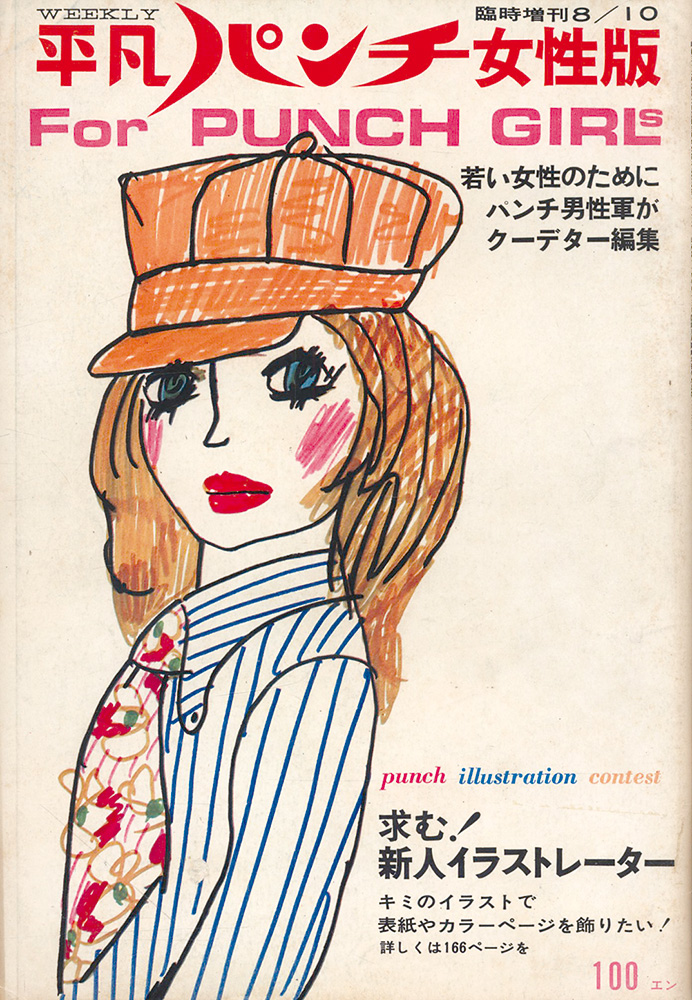
Launched in 1966, Heibon Panchi Joseiban led the way for An An, and MIZUMOTO Akemi became a fan. MIZUMOTO Akemi has been a fan […]

In its first issue, An An was notably able to feature a text by MISHIMA all about glamour. Both in terms of graphic design […]
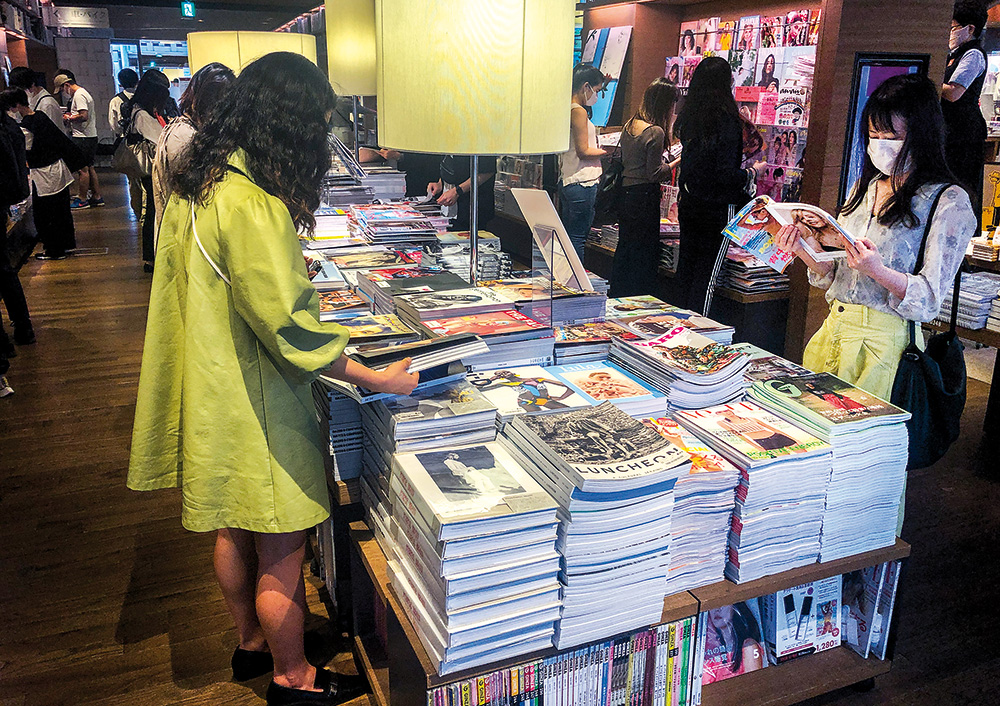
Since its first appearance in 1970, An An has always reflected the development of Japanese women as they have became stronger and more independent of […]
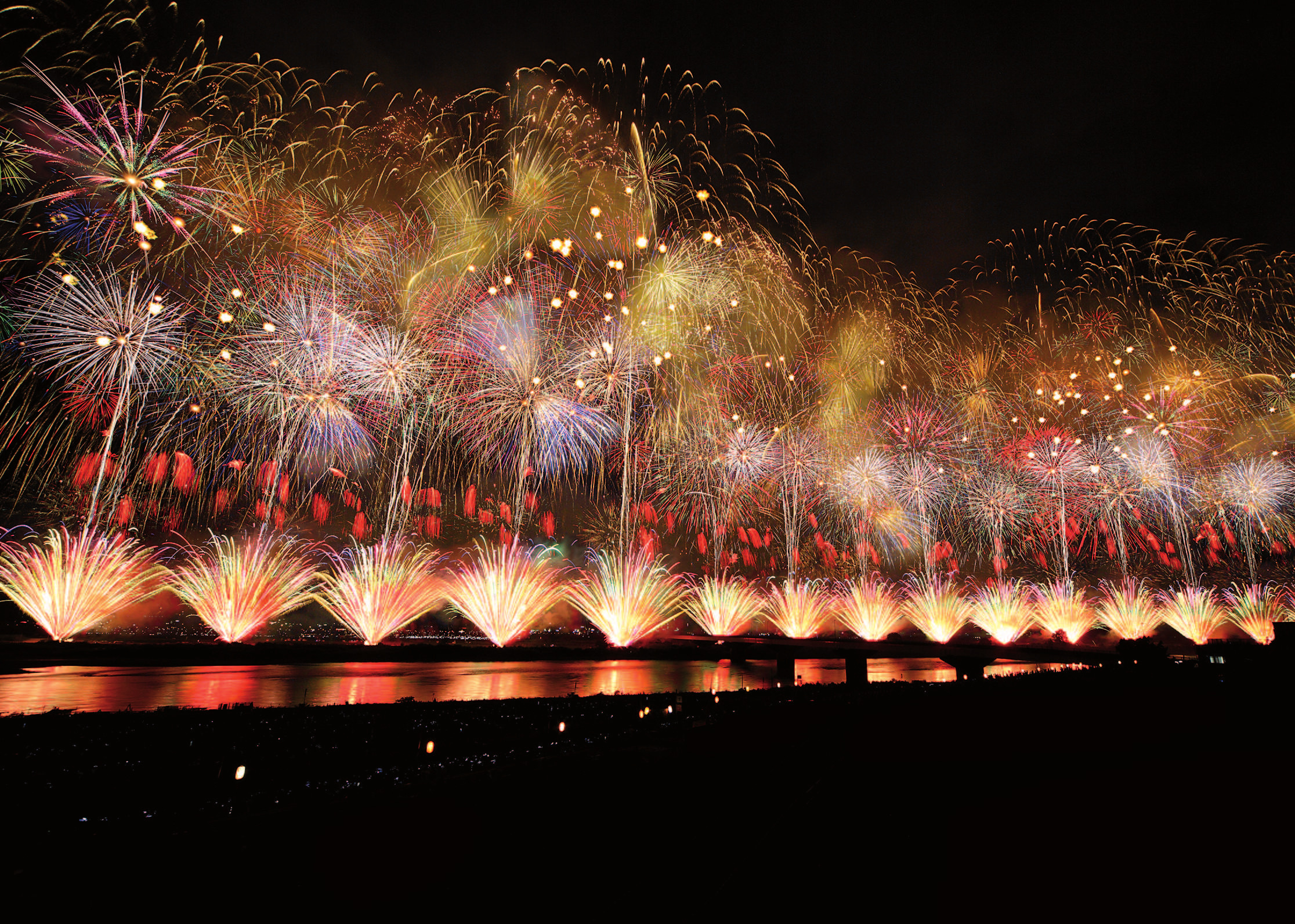
Whatever the season, Nagaoka’s firework displays are always very impressive. The city’s firework display festival is one of the most popular in the Archipelago […]
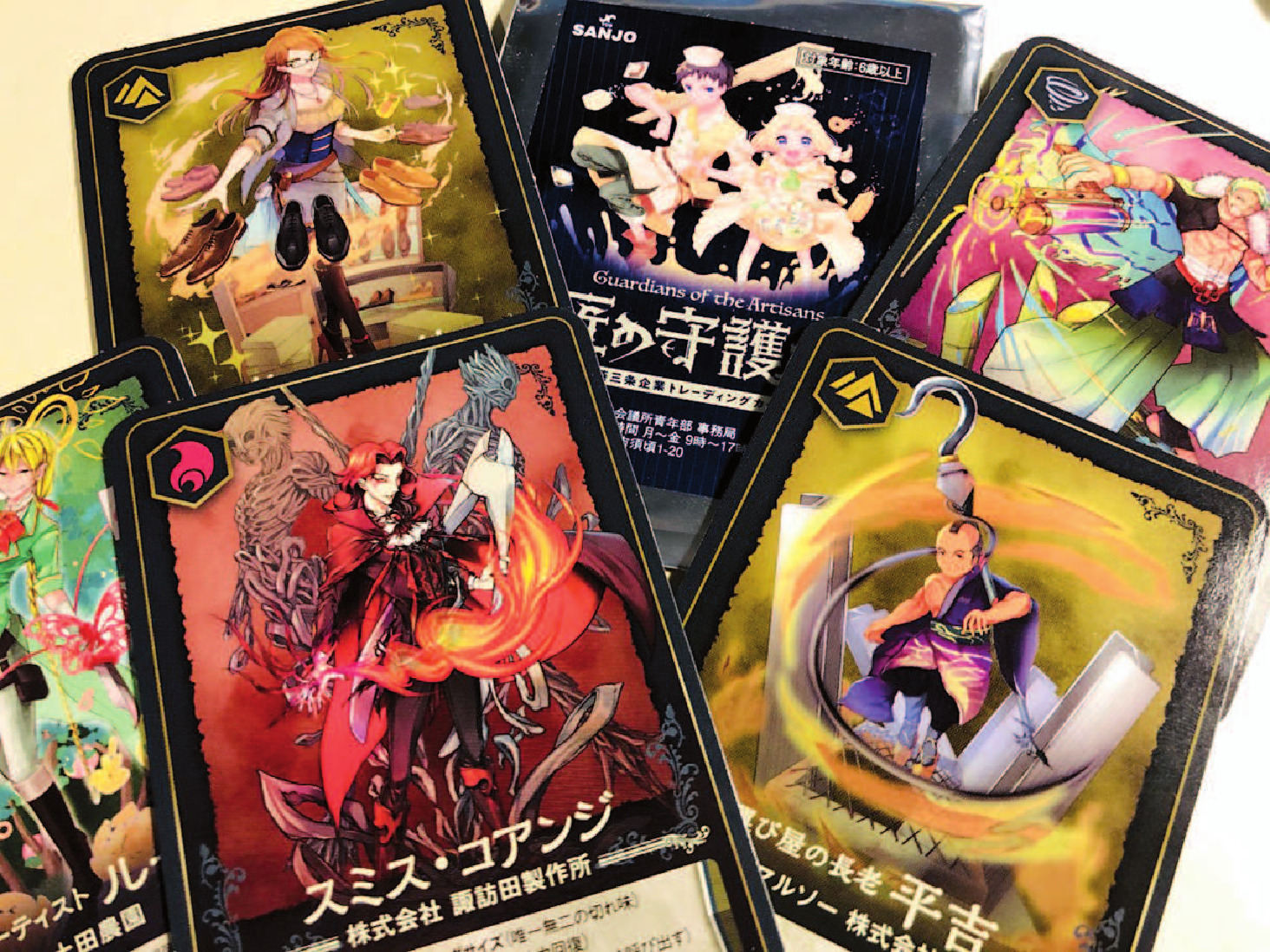
Tourists can leave Sanjo with playing cards to collect and trade, which honour local artisans. Although it does not enjoy the same advantages as […]
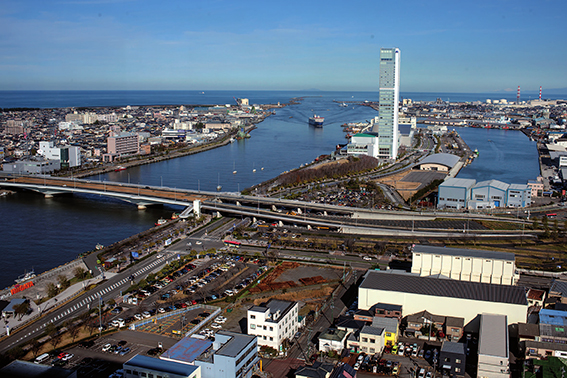
Niigata, the largest city in the prefecture of the same name, is a gateway to the Sea of Japan and its immense potential. The […]
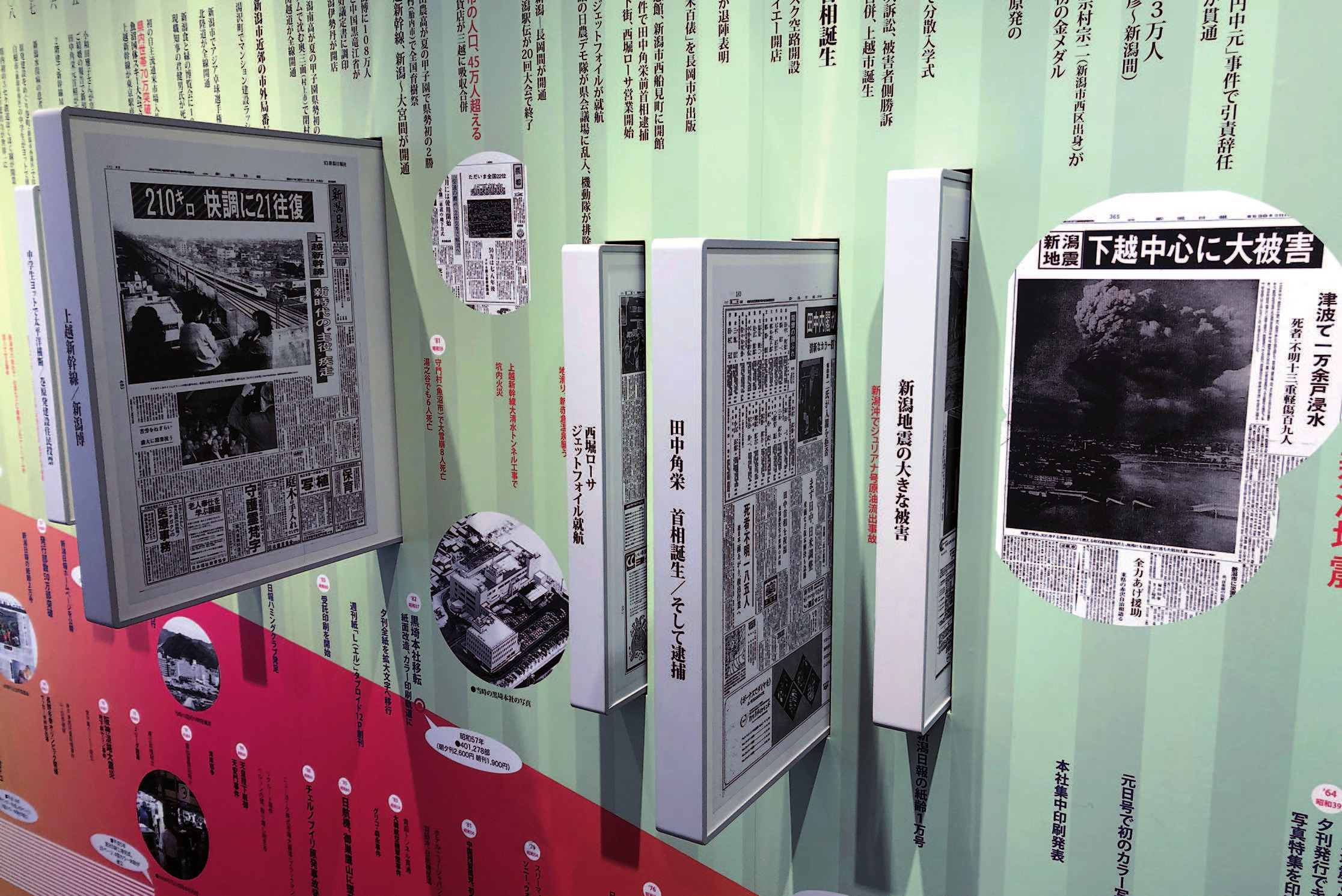
To make young people aware of the importance of reading newspapers, Niigata Nippo has opened a museum on the premises of their new printing works. […]
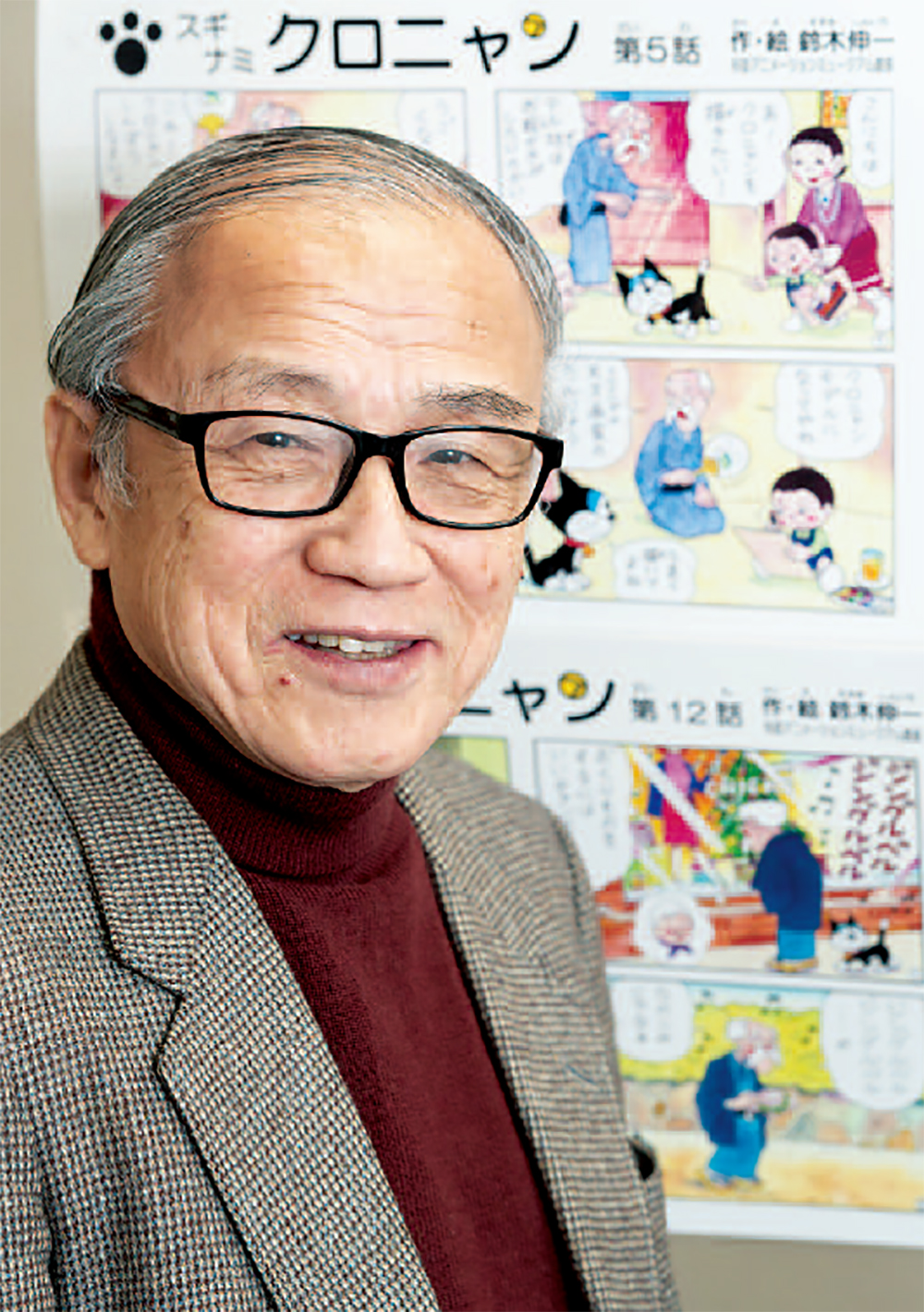
SUZUKI Shin’ichi was 31 years old at the time of the 1964 Tokyo Olympic Games. As a privileged witness to the Olympic frenzy 56 […]
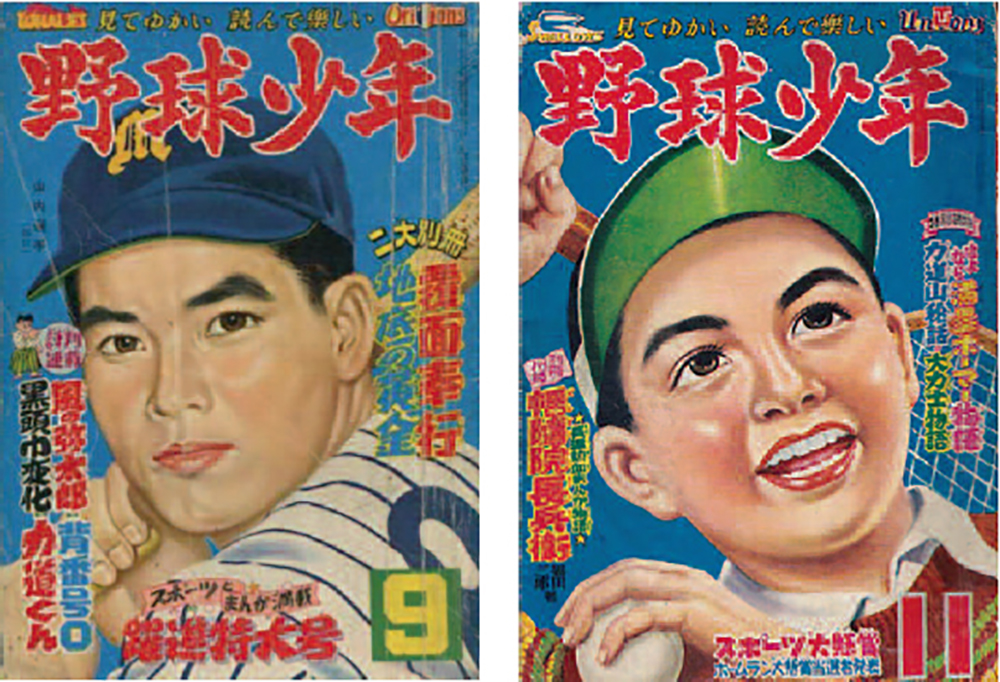
Launched in 1947 by KATO Ken’ichi, Yakyu Shonen was the first magazine for young people dedicated to baseball. Baseball plays a large role […]
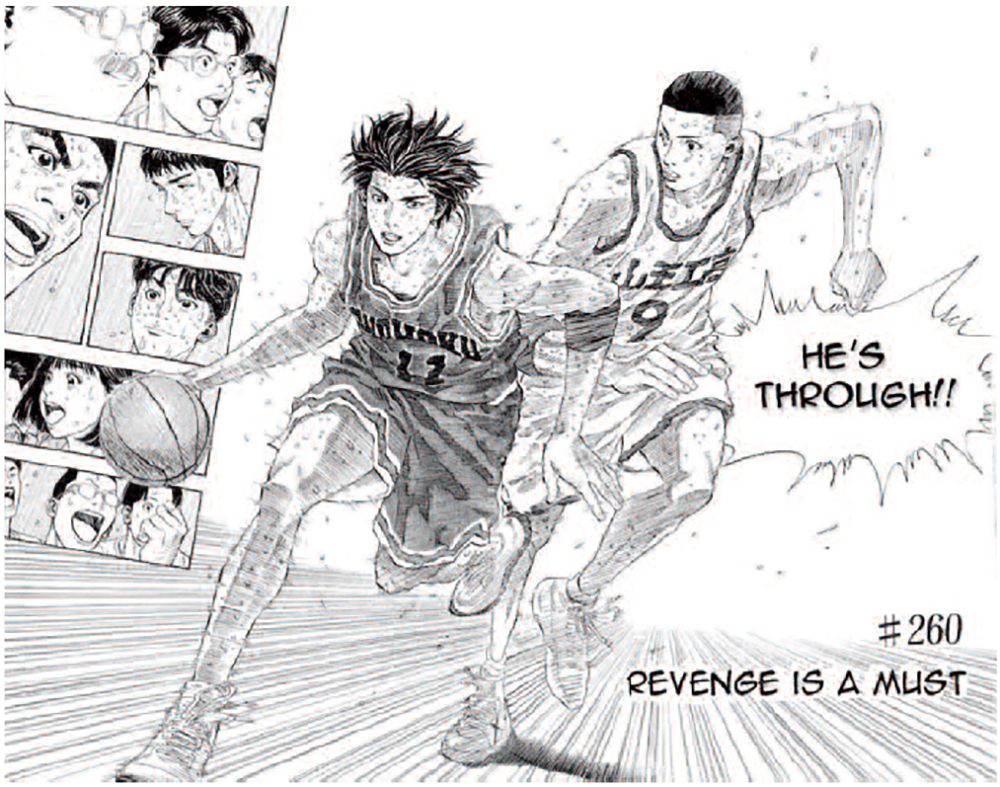
Slam Dunk by INOUE Takehiko helped to promote basketball in Japan. Already avid readers of manga about sport, the Japanese are just as keen […]

Shakunetsu Kabadi by MUSASHINO Hajime is all about kabaddi, an Indian contact team sport. As time goes by and with a more diverse readership, writers […]
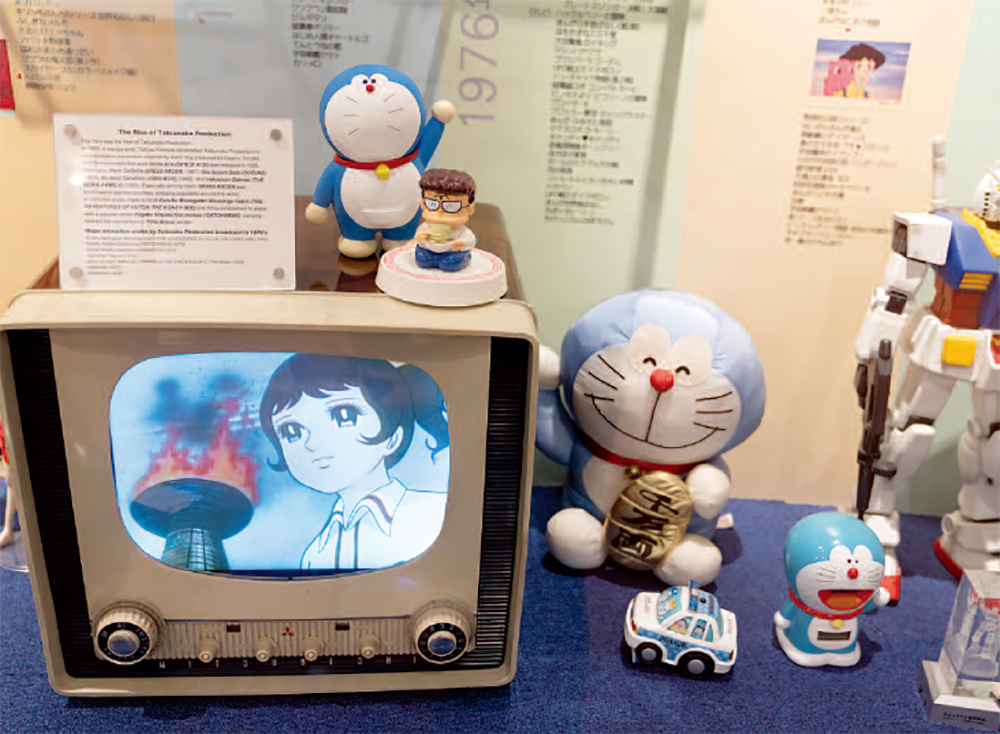
In Tokyo’s Suginami Animation Museum, you’ll find souvenirs of the Olympic Games with the series Atakku No. 1, adapted for television at the end of […]
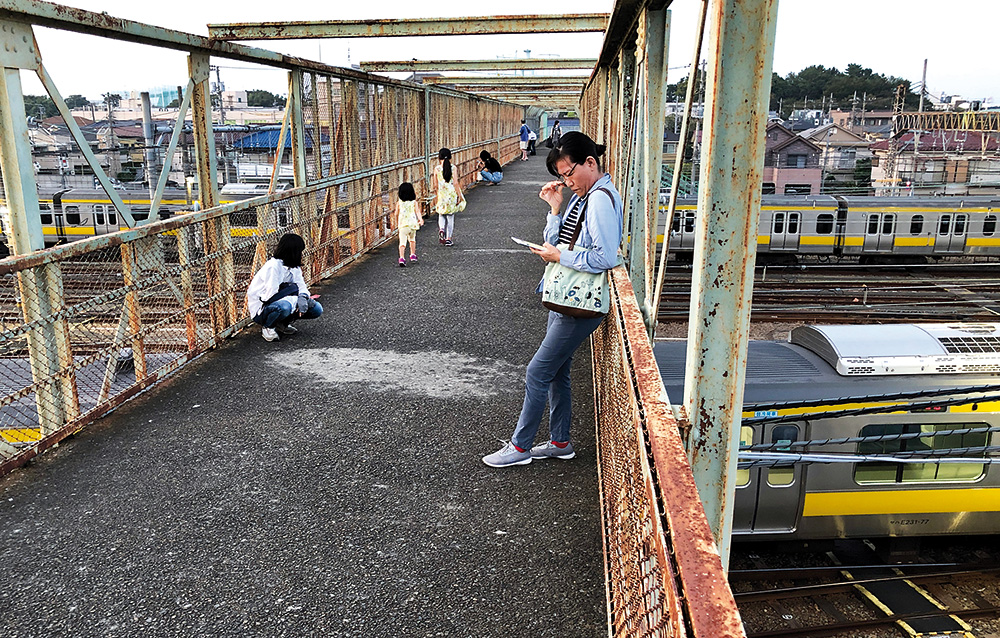
The iron bridge (rikkyo) spanning the tracks of the Chuo Line, which Dazai Osamu liked to frequent, is still a favourite spot for local inhabitants. […]

With its characteristic orange-striped coaches, the line cuts through the capital’s centre in a westerly direction through areas that are full of interest. Crossing the […]
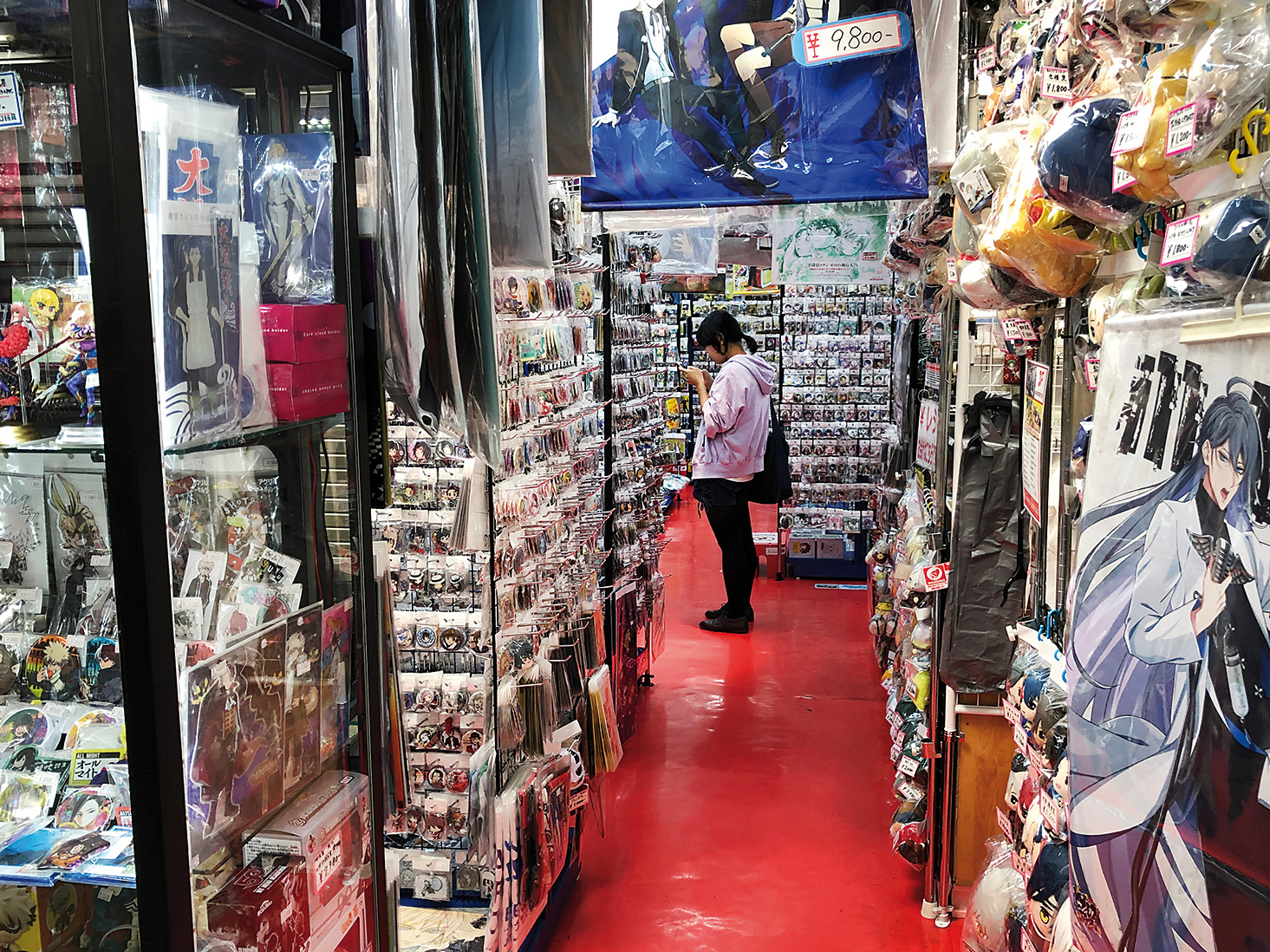
Something to suit all tastes and purses. A 5-minute train journey from Shinjuku, Nakano district has established itself as one of the major centres of […]
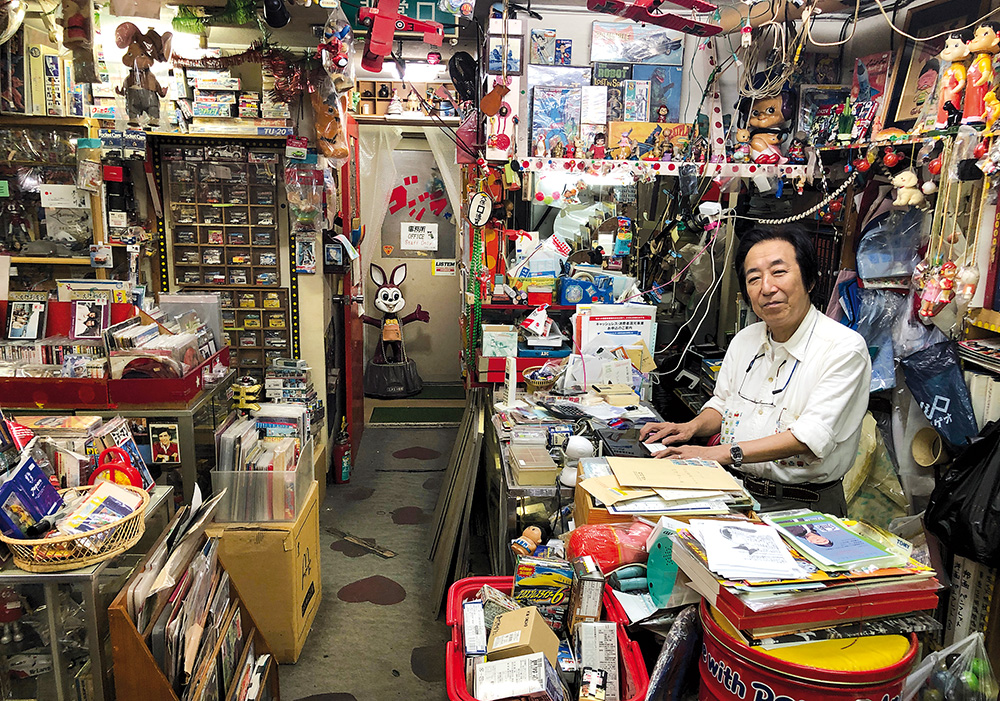
Mr KIZAWA runs Gojira-ya, a shop where fans of Godzilla and other mythical characters find what they are looking for. Travelling westwards on the Chuo […]
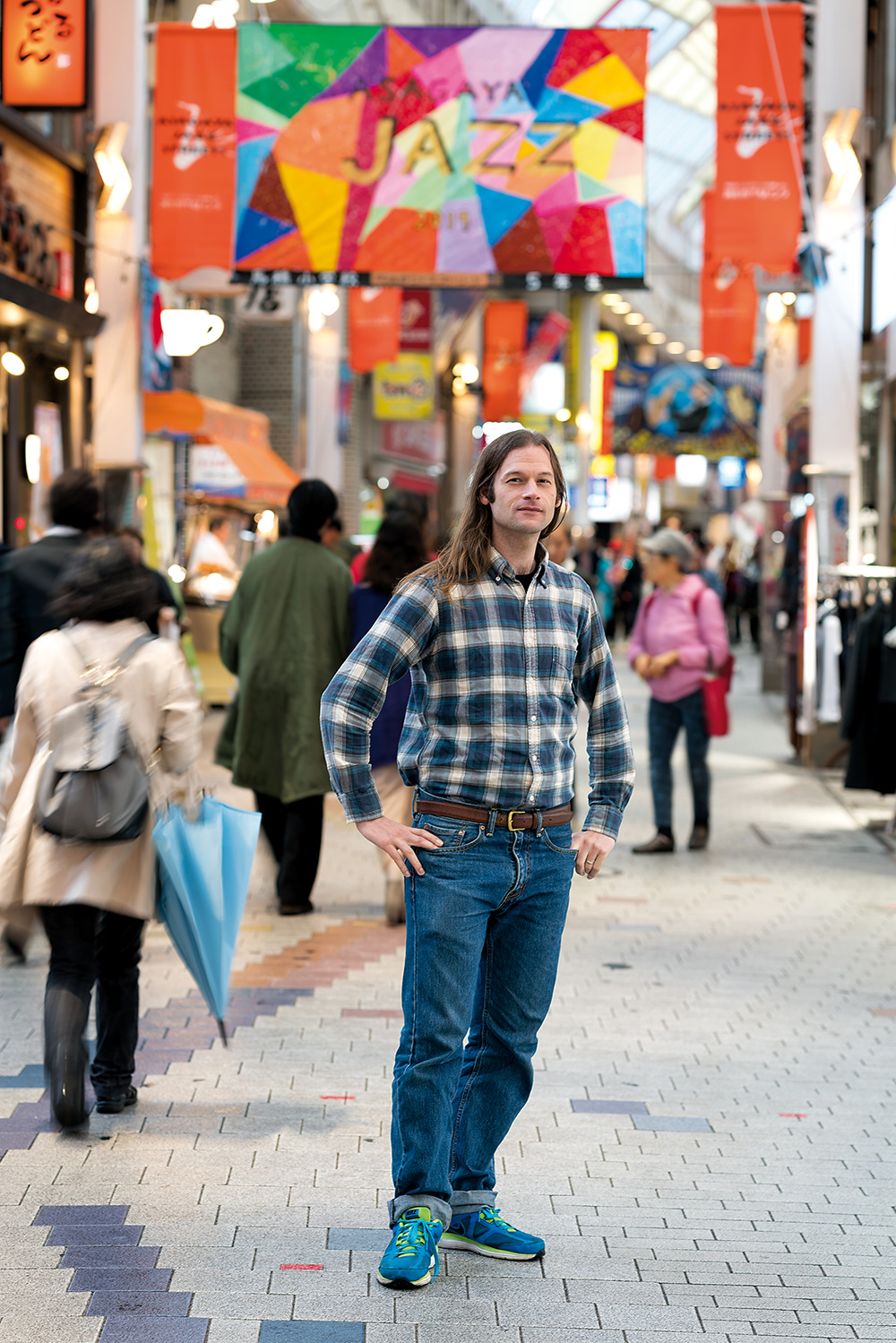
Greg Mudarri passionately defends his adopted neighbourhood. In charge of promoting the district, Greg Mudarri defends its original character. The westbound Chuo Line trains travel […]

Bottles of wine produced by Misawa Winery, Yamanashi Prefecture. For some years now, the Japanese have shown a real interest in this drink with a […]

It’s the younger producers who have been developing new cultivation techniques. Even though the amount produced remains small, the conditions are in place to move […]
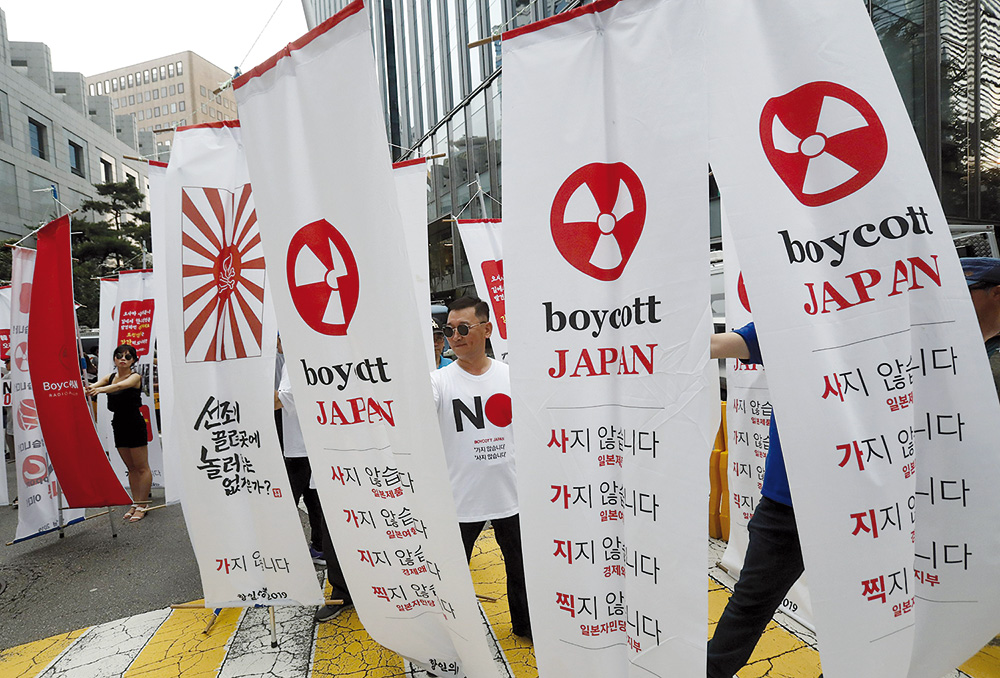
There’s been a growing movement in South Korea over the past few months to boycott Japanese products./All Rights Reserved Both of the United States’ main […]
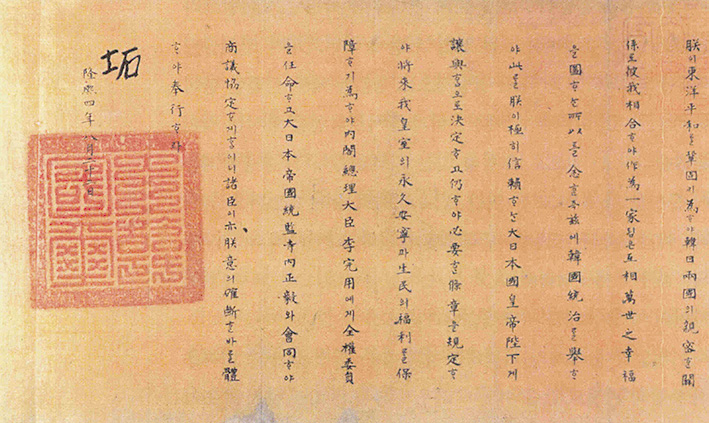
The Annexation Treaty formally placing Korea under Japanese rule was signed on 22 August 1910 by the pro-Japanese Prime Minister Yi Wan-yong and sealed by […]

Since 1905, the port of Shimonoseki has been one of the main entry points for Koreans in search of a better life in the Archipelago./All […]
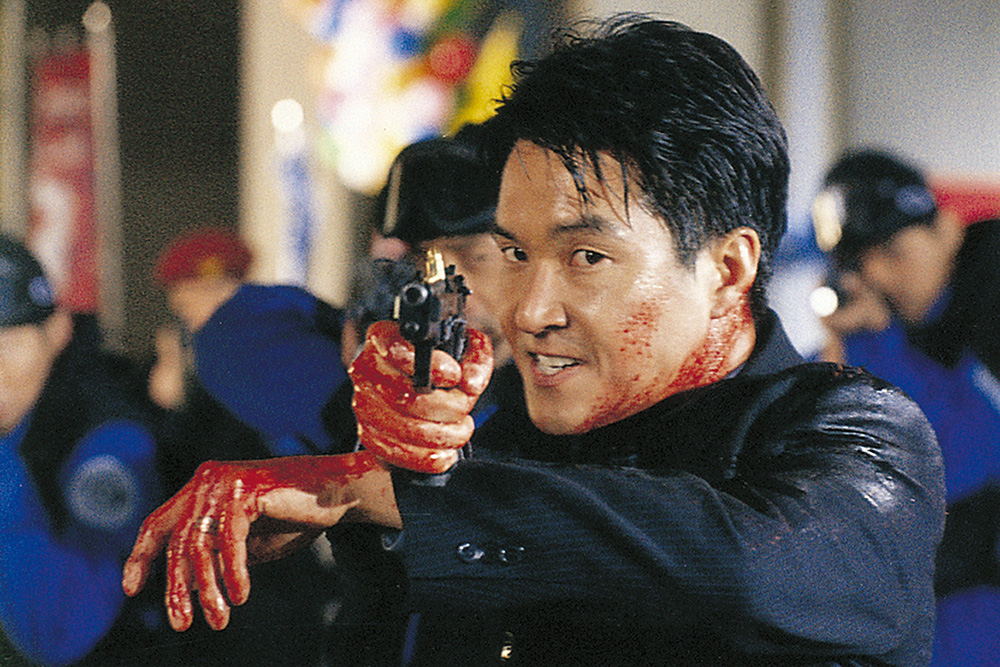
Released on Japanese TV in 2000, Shiri paved the way for South Korean cinema in the Archipelago./All Rights Reserved Up until now and despite the […]
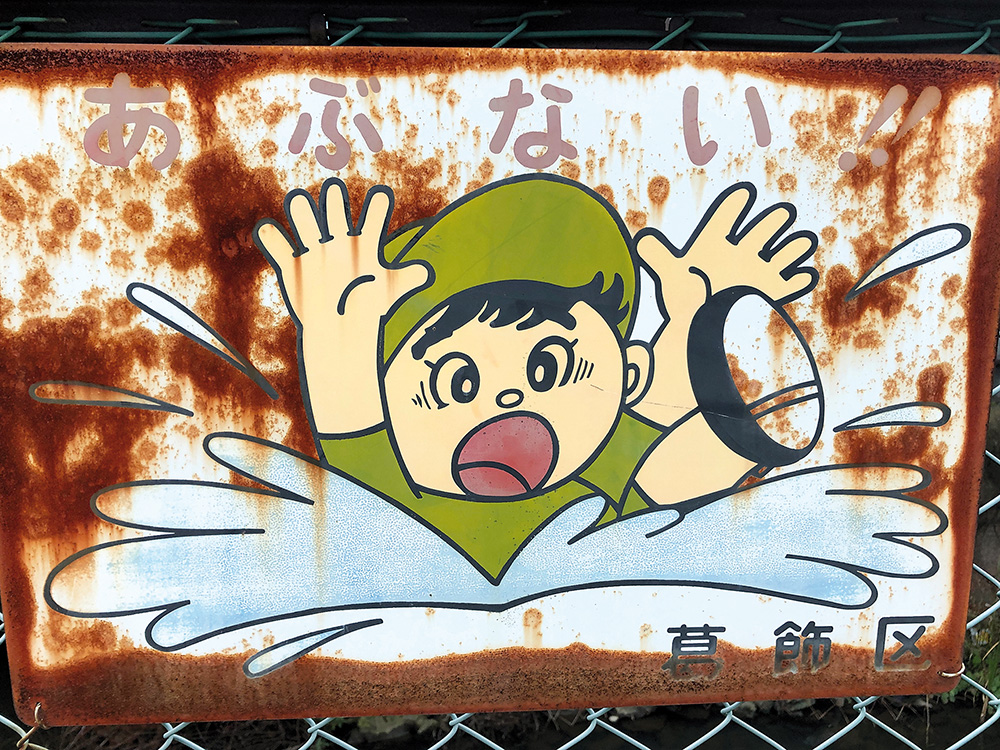
“Beware Danger” is written on this sign targeted at the youngest inhabitants of this district where water is omnipresent. The last truly working-class district in […]
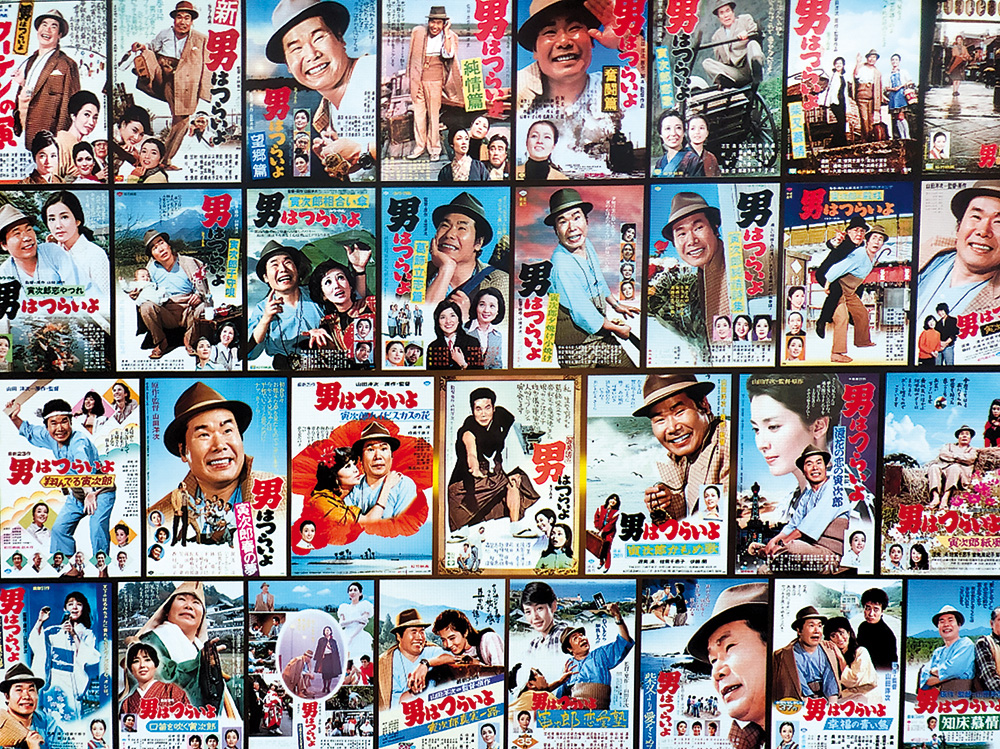
With its 50th film about to appear, Otoko wa tsurai yo is the longest series in cinema history. This mythical character of Japanese cinema inextricably […]

Ryo-san in the foreground with his two sidekicks, heroes of the series Kochira Katsushika-ku Kameari Koen Mae Hashutsujo (KochiKame). Katsushika has inspired numerous manga authors, […]
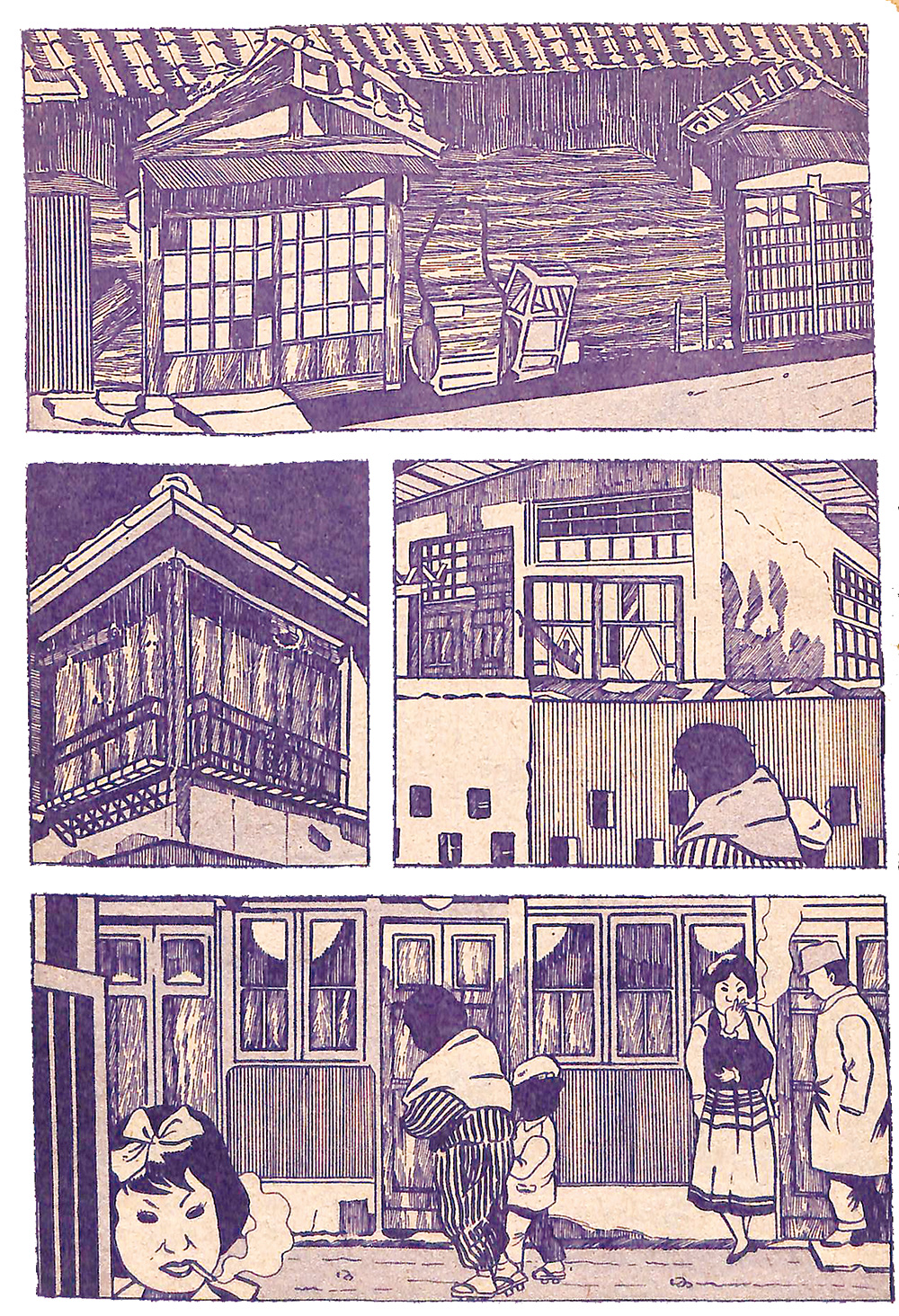
Tadao was very inspired by the red-light district of Tateishi. An extract from Garo no. 58, April 1969. In his work, the mangaka has often […]
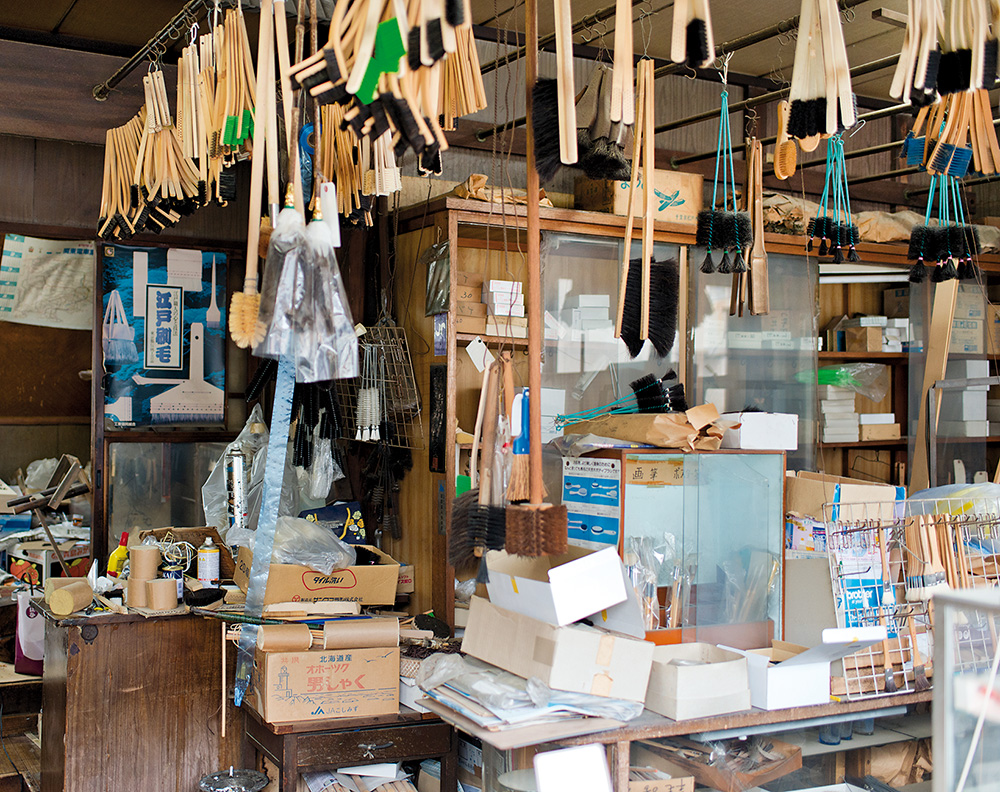
A traditional brush factory. Much of the district’s architecture from the 1950s and 60s has been preserved, even though it risks disappearing soon. Katsushika […]
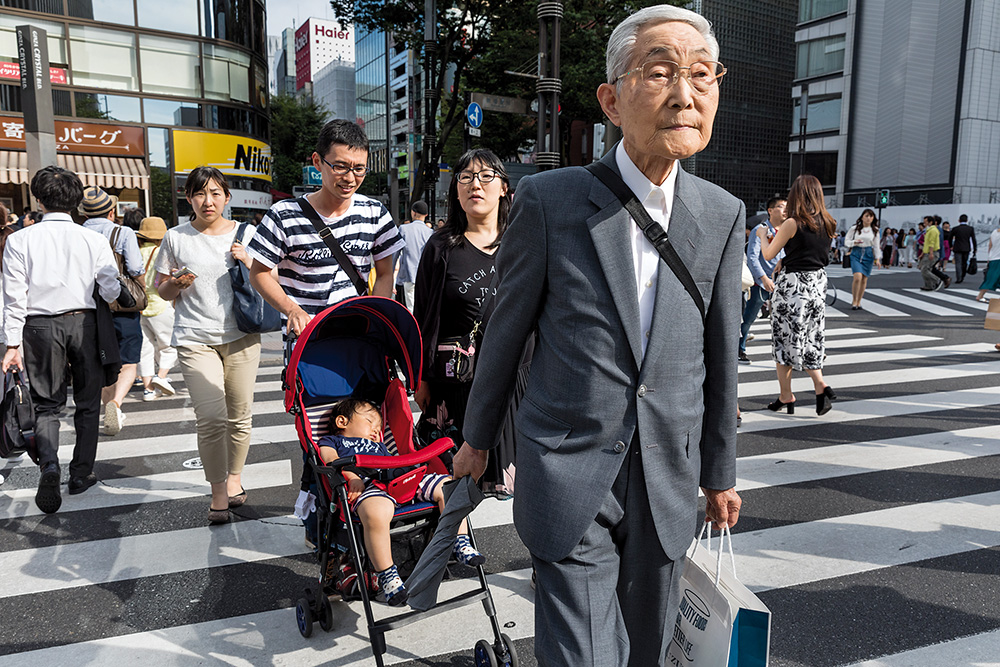
Ginza district, Tokyo. The ageing of the Japanese population affects the way it behaves. japan’s rapidly changing demographic structure presents a few interesting challenges […]
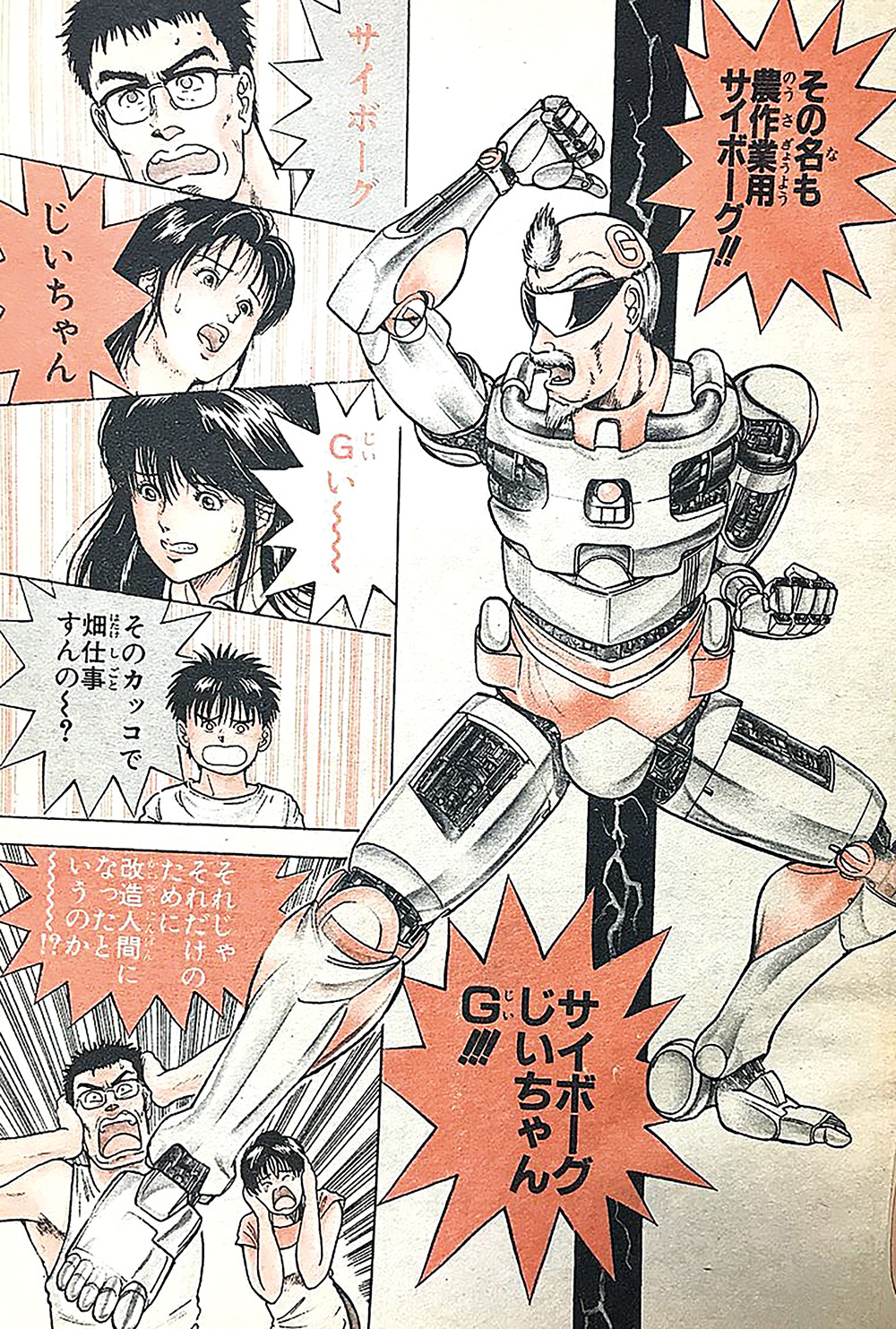
Cyborg Jiichan G published in 1989 by ObaTa Takeshi under the pseudonym KOBATAKE Ken. For some time now, manga stories about elderly people have […]

Symbols of Japan’s huge growth during the 1960s and ‘70s, danchi are occupied nowadays by elderly people who inspire Saito Nazuna’s work. 72-year-old mangaka […]
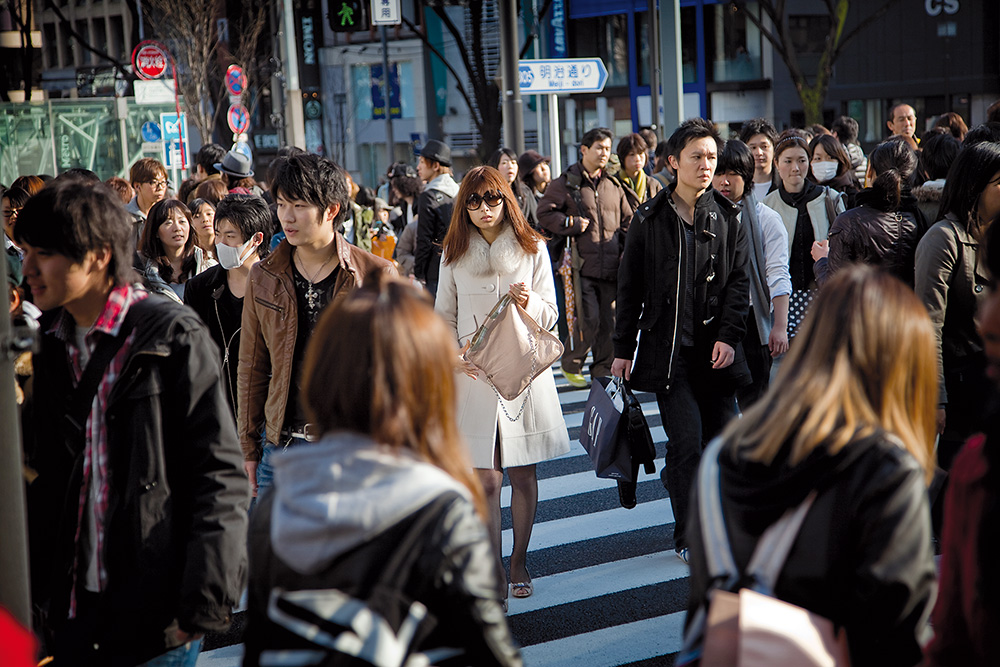
Omotesando district, Tokyo. From the very beginning, Japan and its inhabitants have inspired questions and preconceived ideas. As soon as I saw Japan, I […]
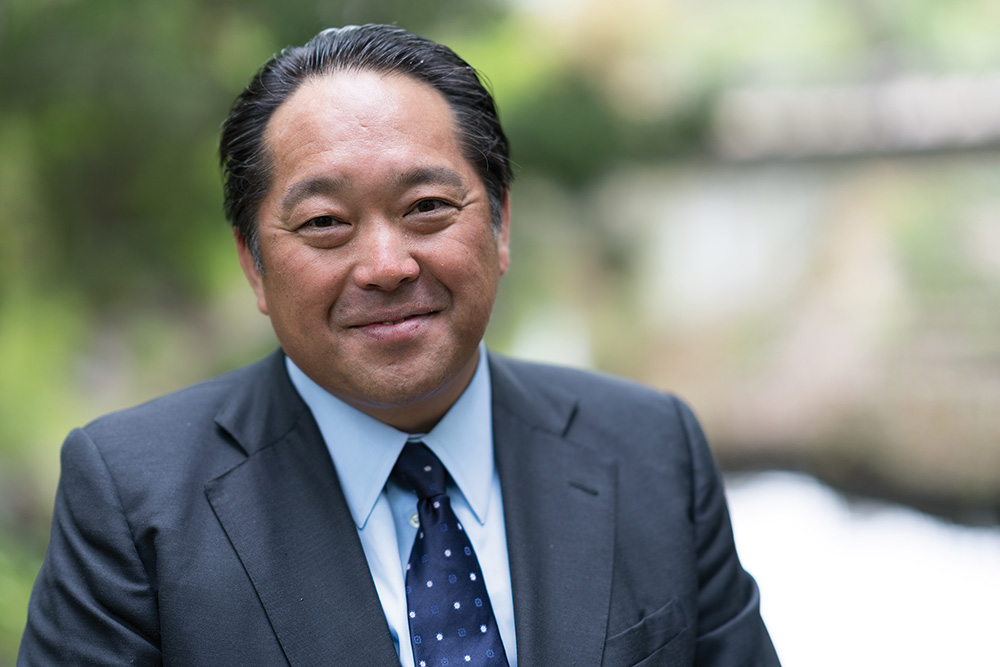
YAZAWA Yutaka’s book was published in U.K. (White Lion Publishing, £20). After a long period abroad, YAZAWA Yutaka has had to reacquaint himself with […]
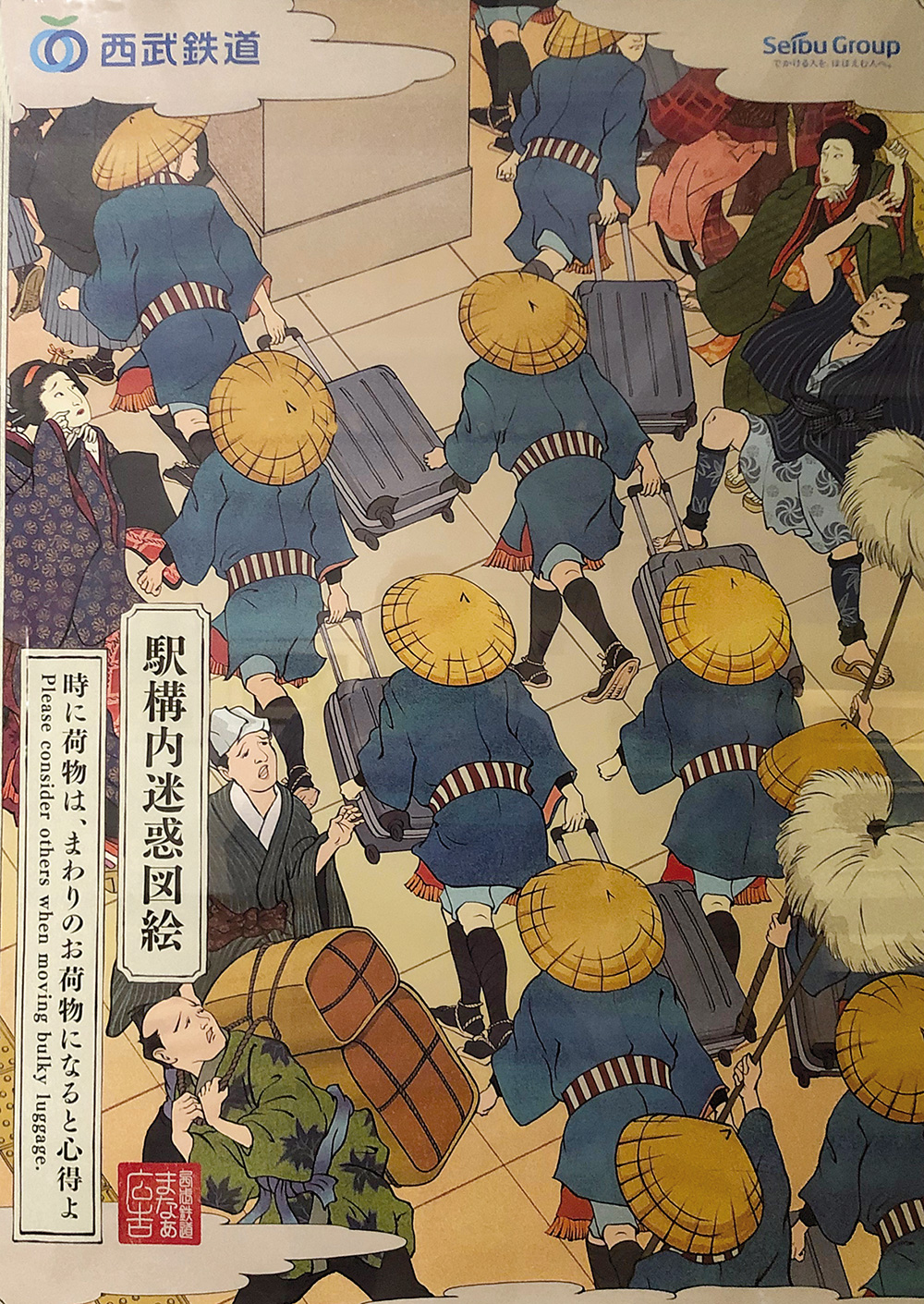
The Seibu Railway company published very nice posters to explain how to behave in the station. How should you behave in Japan? A headache […]

It’s time to prepare dinner. Today’s menu is temaki-zushi. Yummy! It’s possible to experience several hours of life in the heart of a Japanese […]
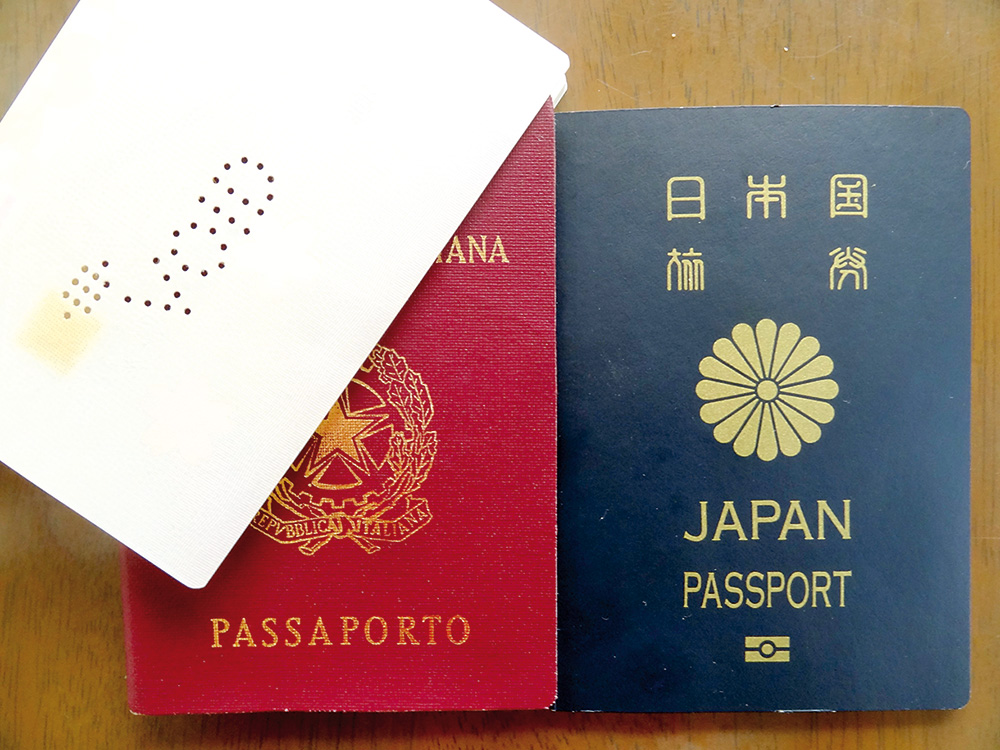
some foreigners who have lived in the Archipelago for a long time have chosen to become Japanese nationals. In the previous articles we’ve seen what […]
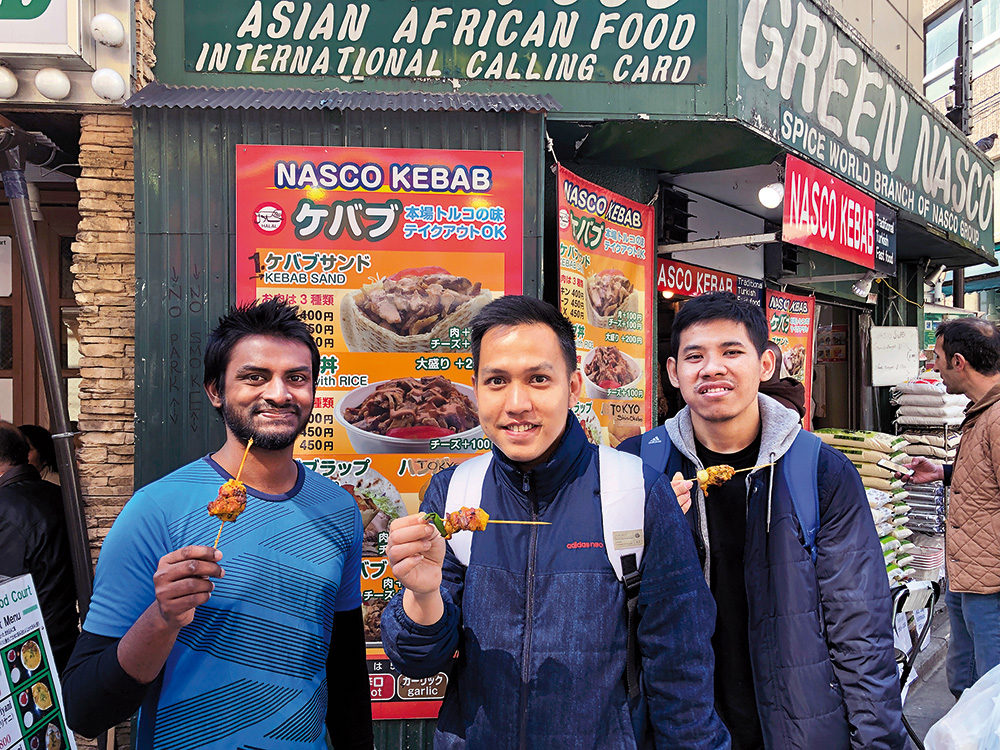
The government wants to attract more foreign workers, but appears not to have chosen the best way to go about it. Immigration has been one […]
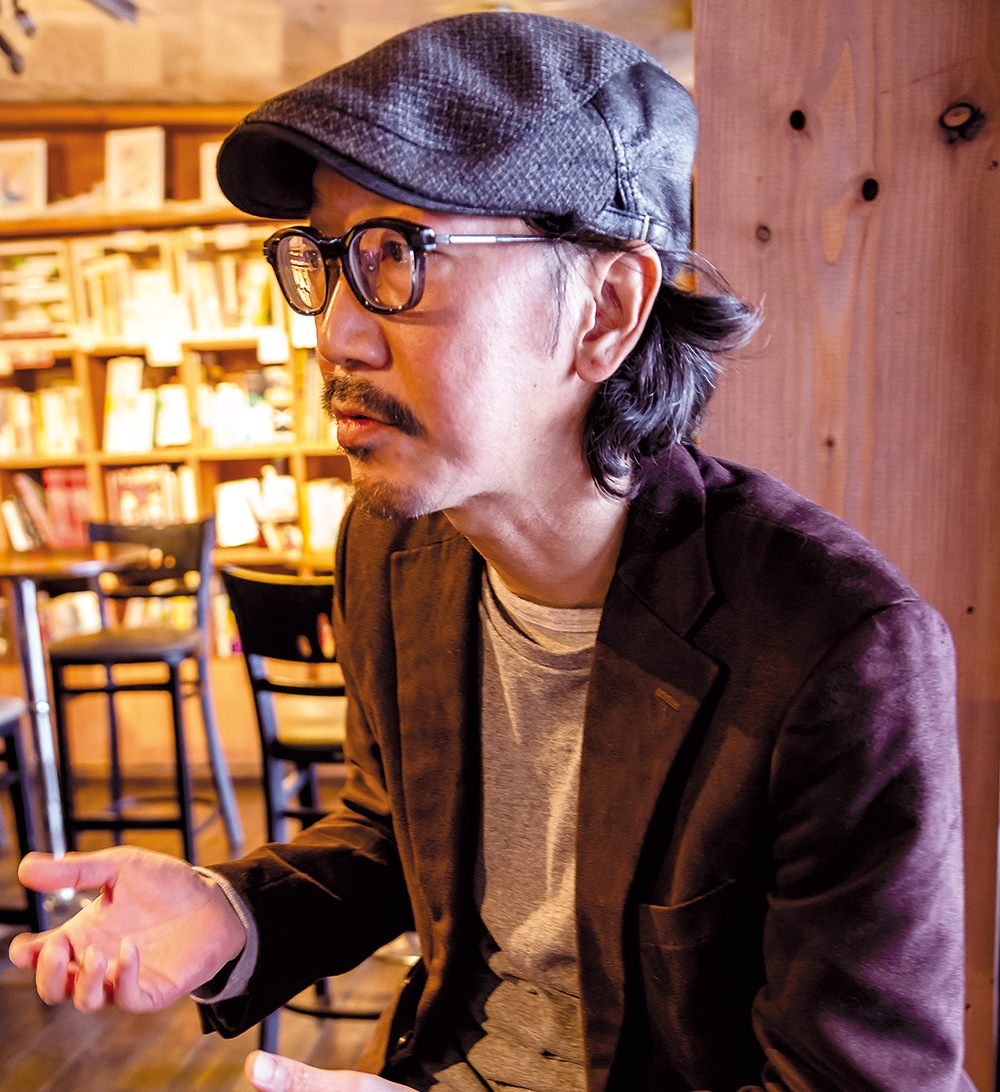
Many Japanese have discovered a growing number of foreigners working in their local convenience stores… The face of Japanese convenience stores is changing, literally. More […]
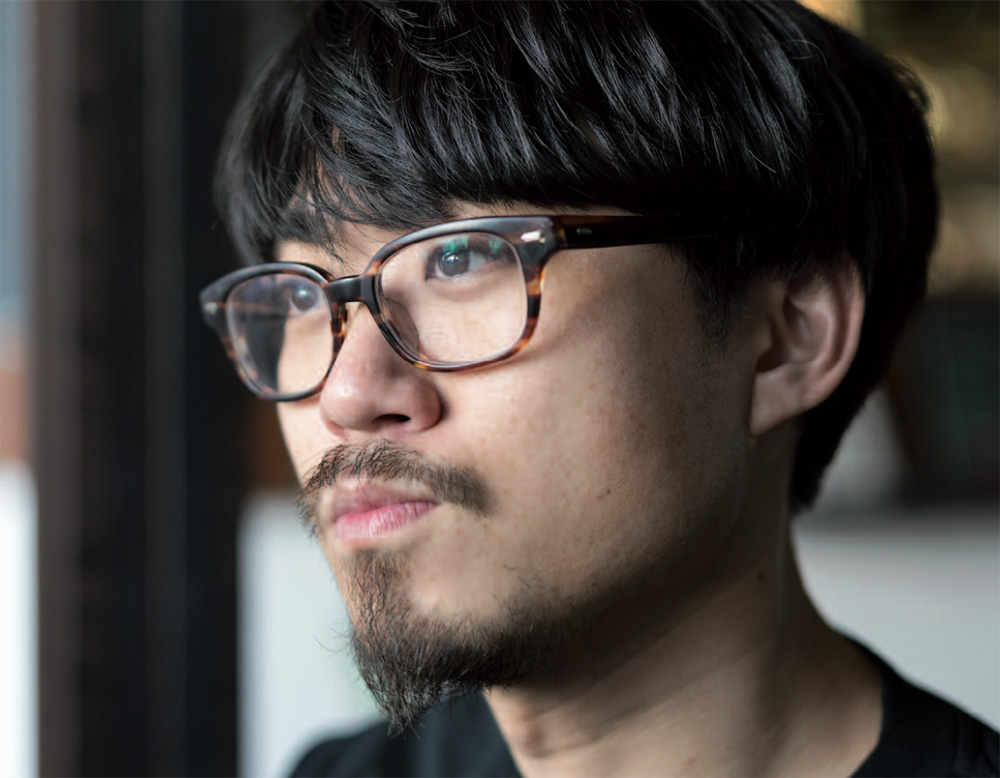
A keen observer of immigration issues, MOcHIzuKI Hiroki challenges the authorities’ approach to the question. What is the future of immigration in Japan? And is […]

This Tokyo taxi company has begun to recruit foreign drivers with a certain degree of success. It’s 07.30, and people are milling around Hinomaru Kotsu […]

It’s taken 30 years for the otaku subculture to become established, both in Japan and the rest of the world. Neon Genesis Evangelion by ANNO […]

As a leader in technology, Japan has seen its position increasingly challenged during the past three decades. Toyoda Akio in front of a Mirai, the […]
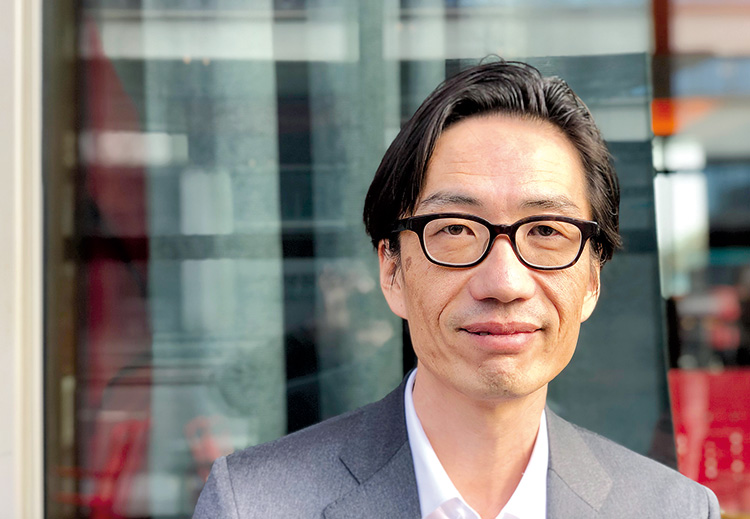
According to YuAsAMakoto, Japan has been too slow taking into consideration the rise in poverty in the archipelago. Yuasa Makoto in Paris in March. […]
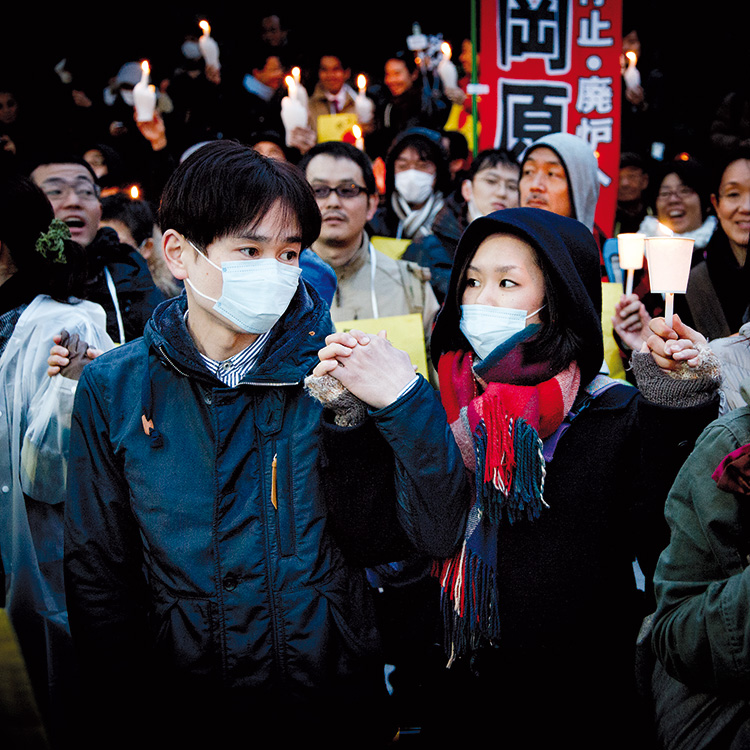
In a few days time, Japan will enter a new era. This presents an opportunity to look back over the last 30 years. On 11 […]
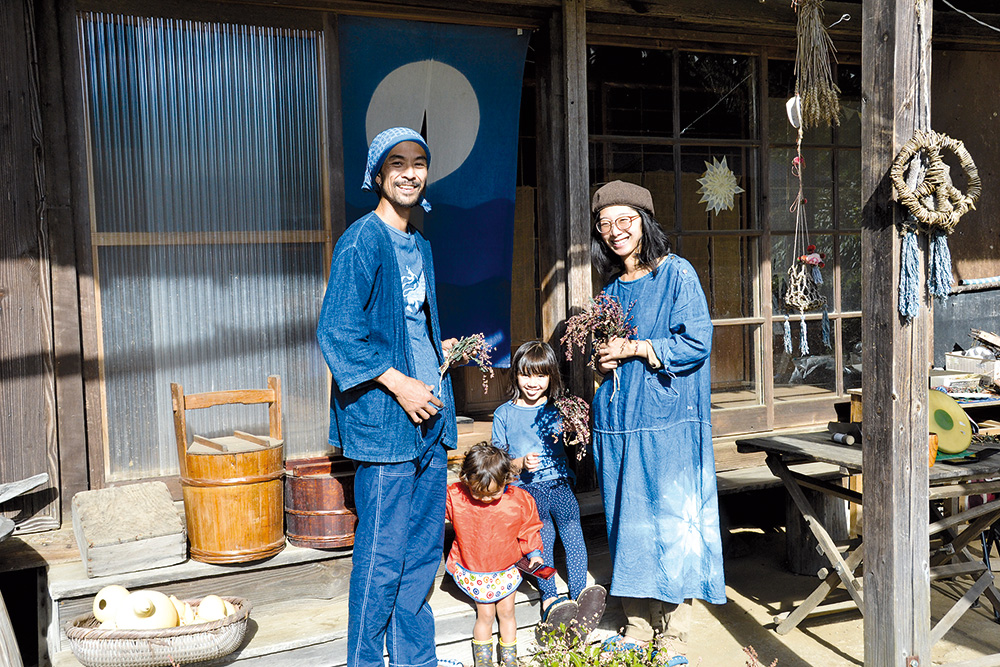
The Kawaragawas settled in Mizukami after the Fukushima disaster and successfully embarked on indigo dyeing. For a growing number of city dwellers, the prefecture […]
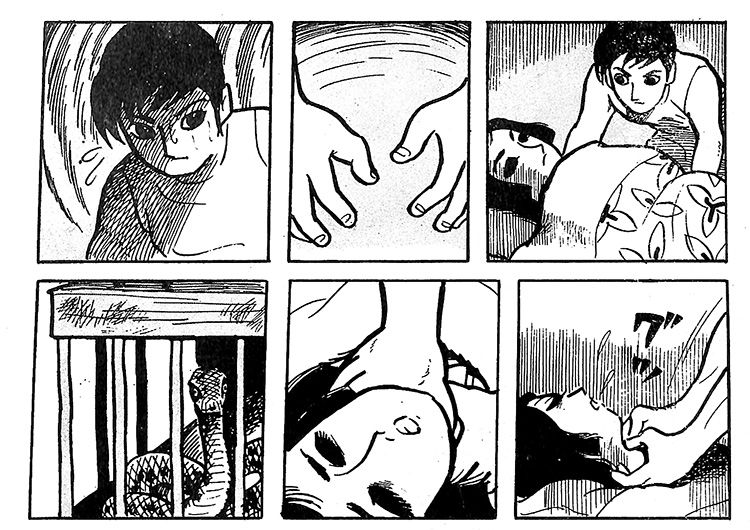
Taken from “Numa” (The Swamp), which first appeared in issue no.18 of Garo (February 1966, pp.118-131). Someone who’s considered to be a living manga genius […]
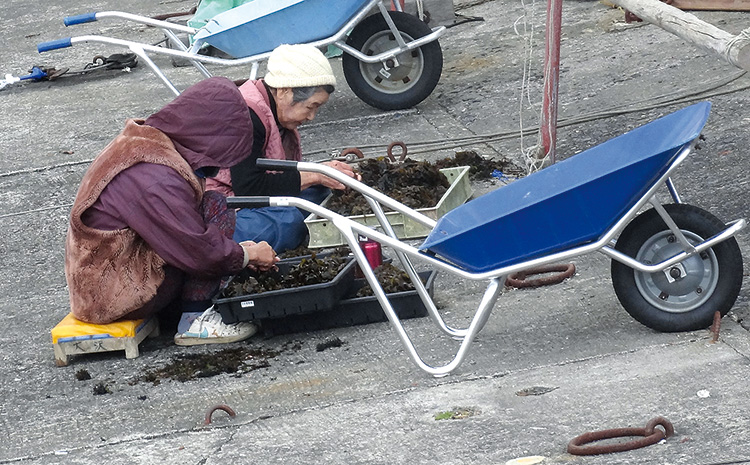
Futomi, a fishing village in decilne, is one of the places that made an impression on the author of “Neji-shiki”. As a fan of […]
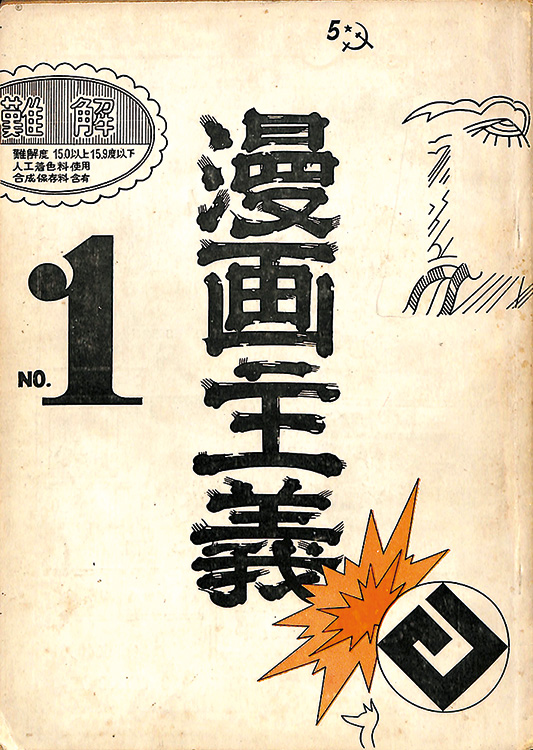
The first issue of Manga shugi (March 1967) was almost wholly devoted to Tsuge Yoshiharu. The work of Tsuge Yoshiharu was influenced by his […]
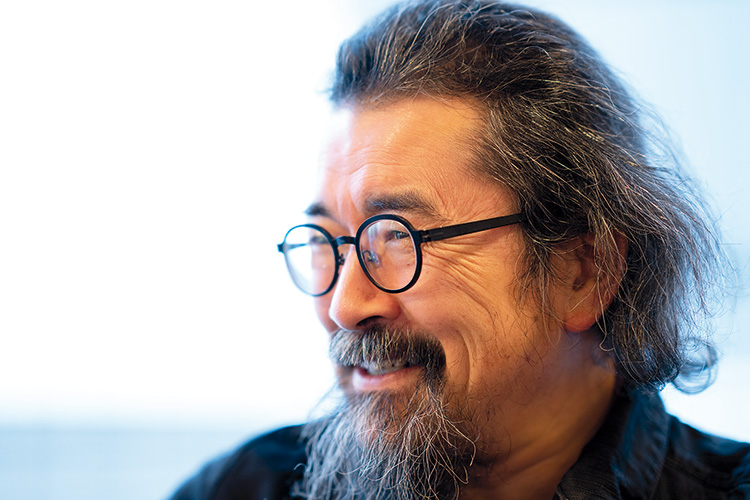
A great admirer of Tsuge Yoshiharu, Asakawa Mitsuhiro worked hard to ensure his work was finally published in its entirety in the West. An […]
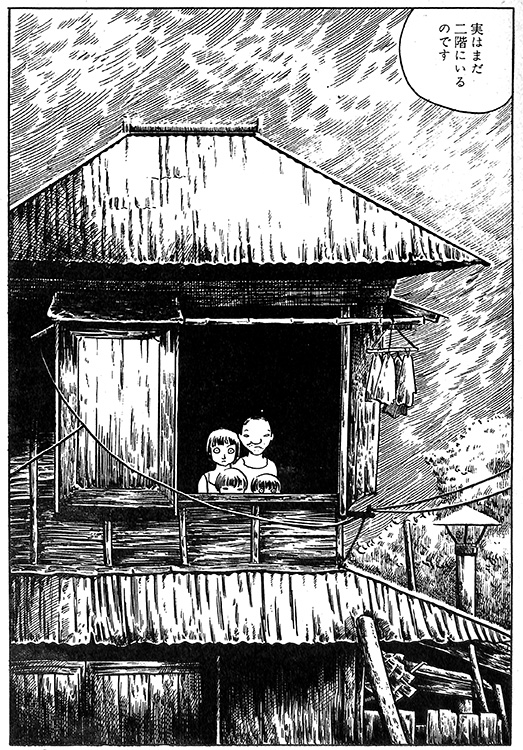
Taken from “Ri-san ikka” (The Family of Mr Lee), which first appeared in issue no. 34 of Garo (June 1967, pp. 177-188). For the […]
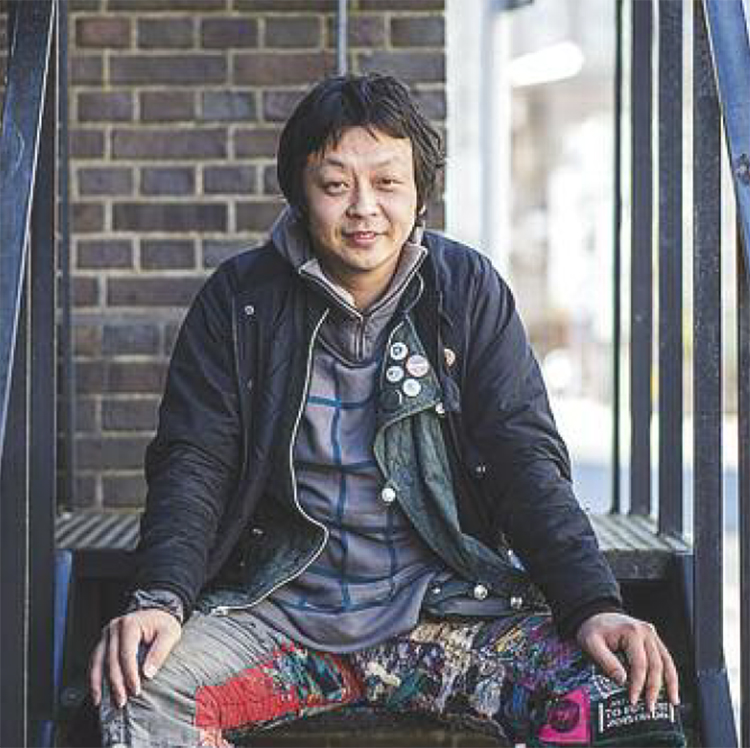
Yoshiki considers himself to be the spokesperson of Turtle Island rather than its leader. A good example of creativity used to help others, every […]
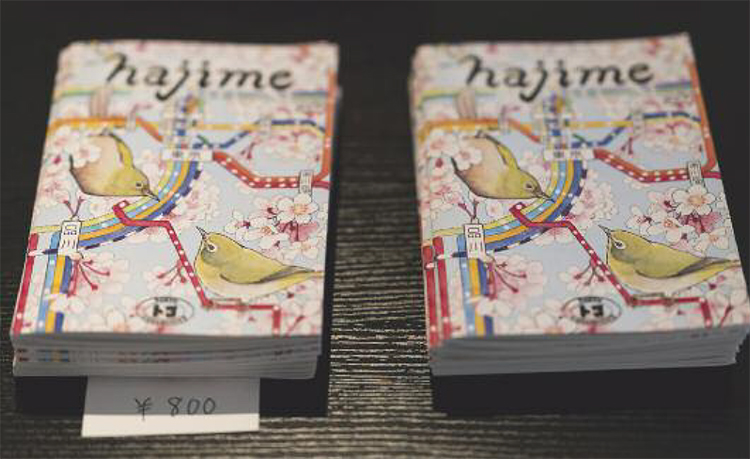
Hajime is the first work to be published by the ToCo collective, in which artists recall their first impressions of the Japanese capital. Unity […]
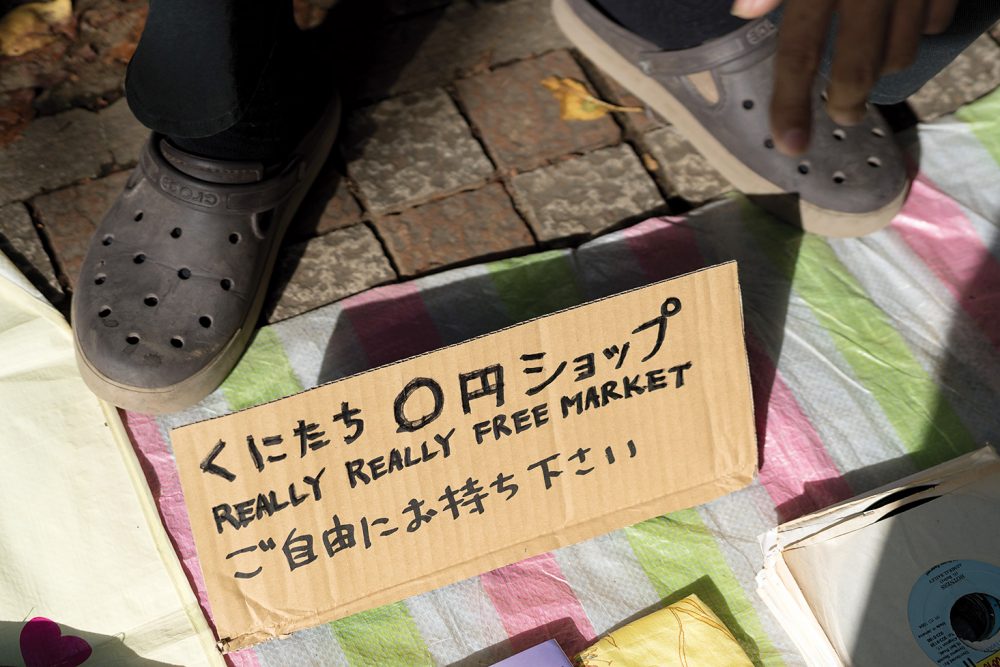
Benjamin Parks for Zoom Japan In West Tokyo, there’s a new kind of market where people come to donate things they no longer need. On […]
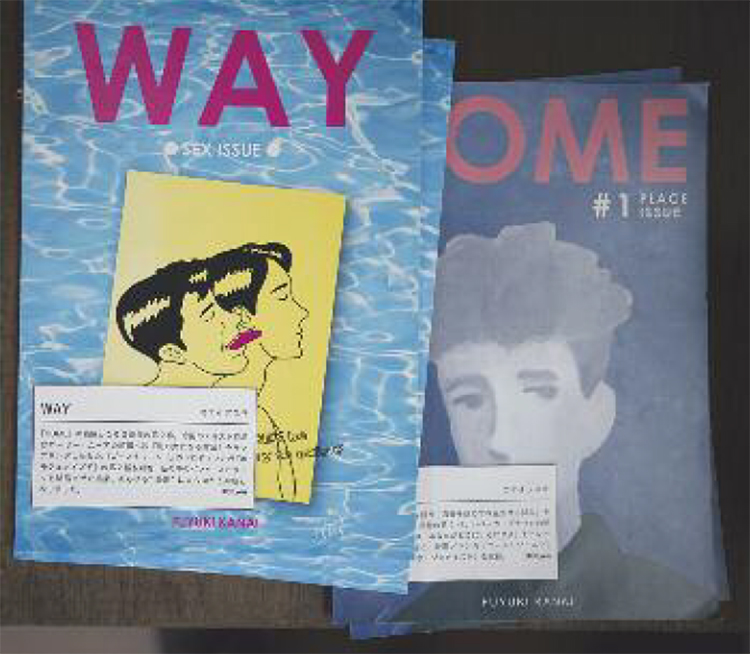
Promoting zines is an important part of Cry in Public’s activities. Outside the Japanese capital, there are numerous very active groups supporting entrepreneurial freedom. […]

Situated in the Kamagasaki district of Osaka, Cocoroom was founded by the poet Ueda Kanayo. After the madness of the financial bubble and the […]

2019 RWc According to the Organising Committee of the 2019 RWC, arrangements for the competition are well in hand. With less than a year […]
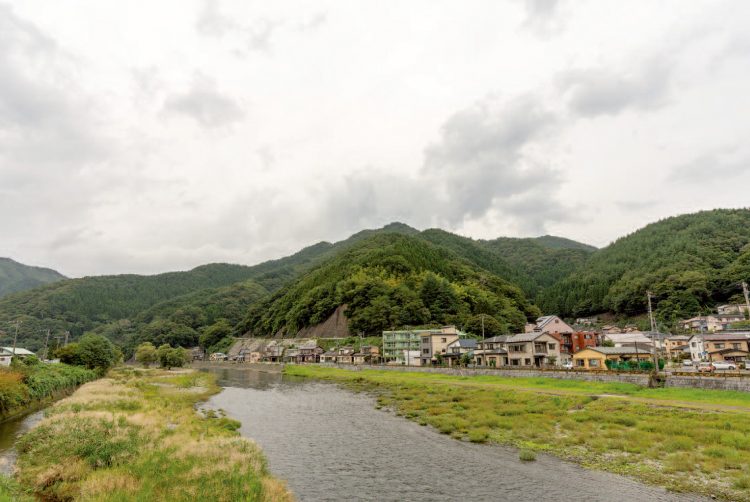
Benjamin Parks for Zoom Japan A victim of the 2011 tsunami, Kamaishi turned to its tradition of rugby playing to help its recovery. Most […]
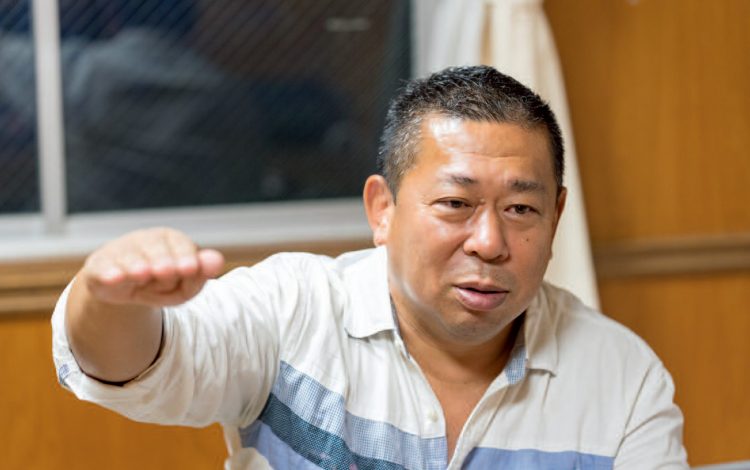
Benjamin Parks for Zoom Japan A keen observer of rugby, the editorin- chief of Rugby Magazine shares his analysis of the Japanese game. The […]
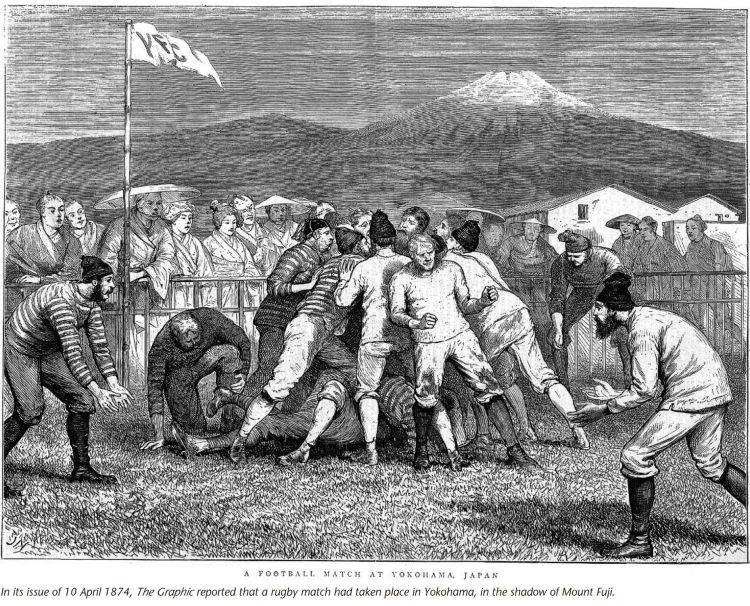
© British library Rugby is not new to the archipelago. The 2019 World Cup will open a new chapter. In less than a year’s time, […]
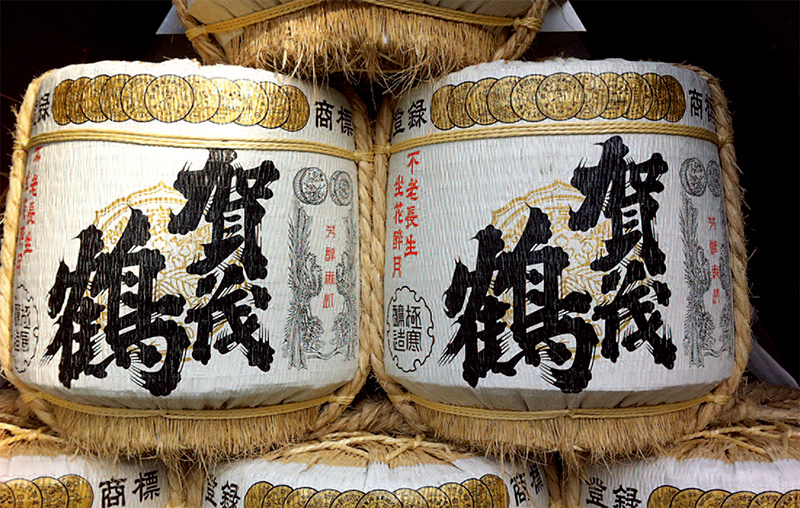
After manga, animation and cuisine, sake is an essential element of Japanese soft power. Since the end of the Cold War at the turn of […]
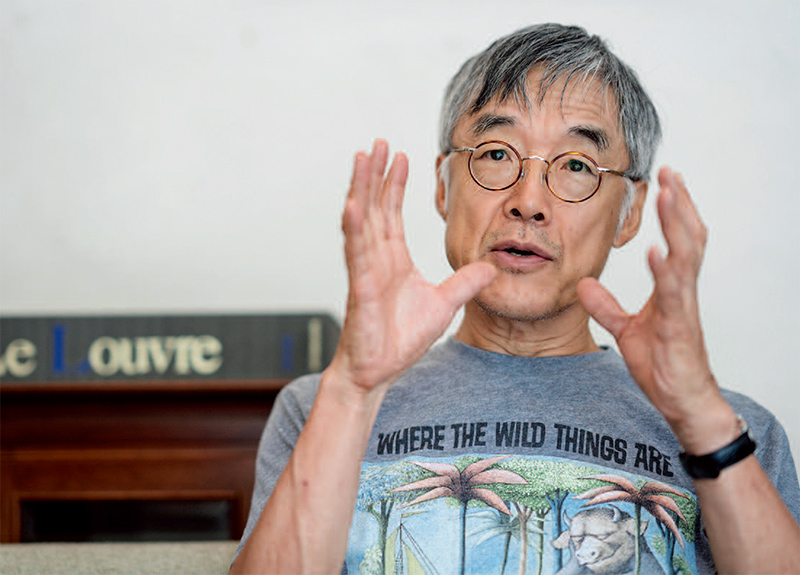
The writer, who is considered to be one of the finest novelists in the archipelago, shared his thoughts with us. Takahashi Gen’Ichiro is one of […]
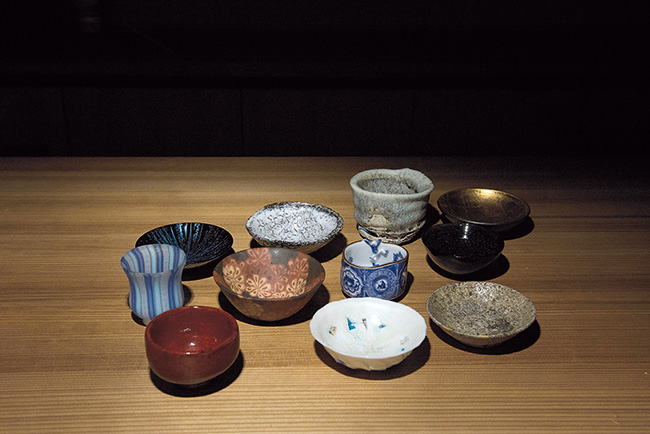
To enjoy all of sake’s subtleties, the drinking vessel must be chosen with care. Here’s some advice. The taste of sake changes according to the […]
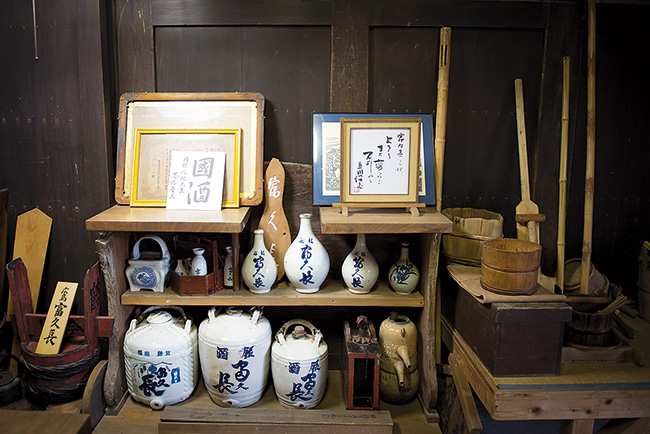
Like Imada Miho, more and more women are starting to work in the production of the drink of the gods. Some of the treasures from […]
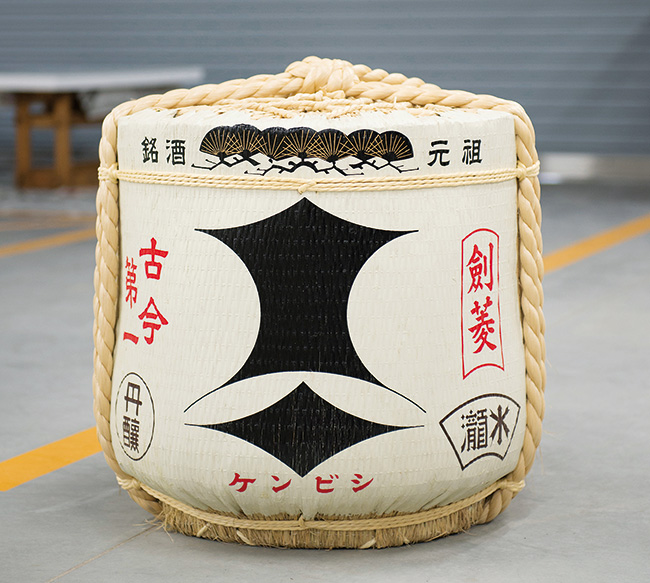
As one of the oldest breweries in the archipelago, it endeavours to preserve traditional methods of production. The celebrated logo of the Kenbishi brewery, founded […]

The work of Yoshida Kimiko is representative of the multitude of connections between Japan and France. The Cherry Blossom Bride. Self-portrait, 2006 2018 marks […]
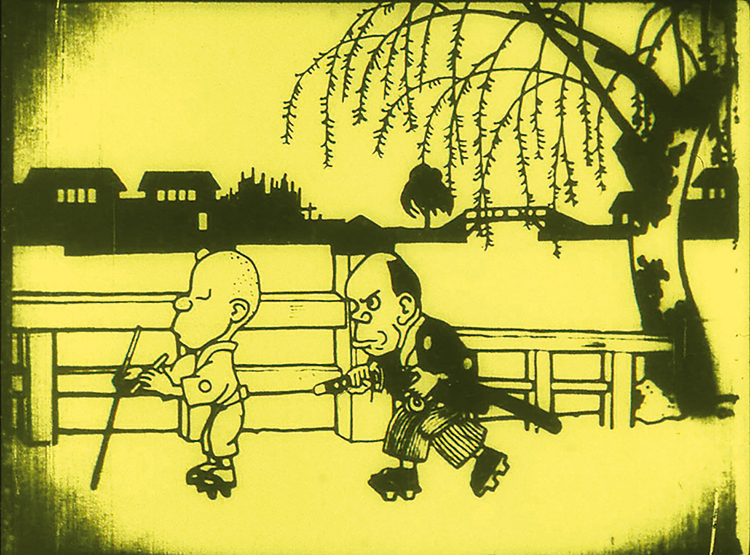
Are animation films an example of a kind of Japonisme, which continues to reinvent itself? The Blunt Sword (Namakura katana) by Kouchi Jun’ichi (1917). […]
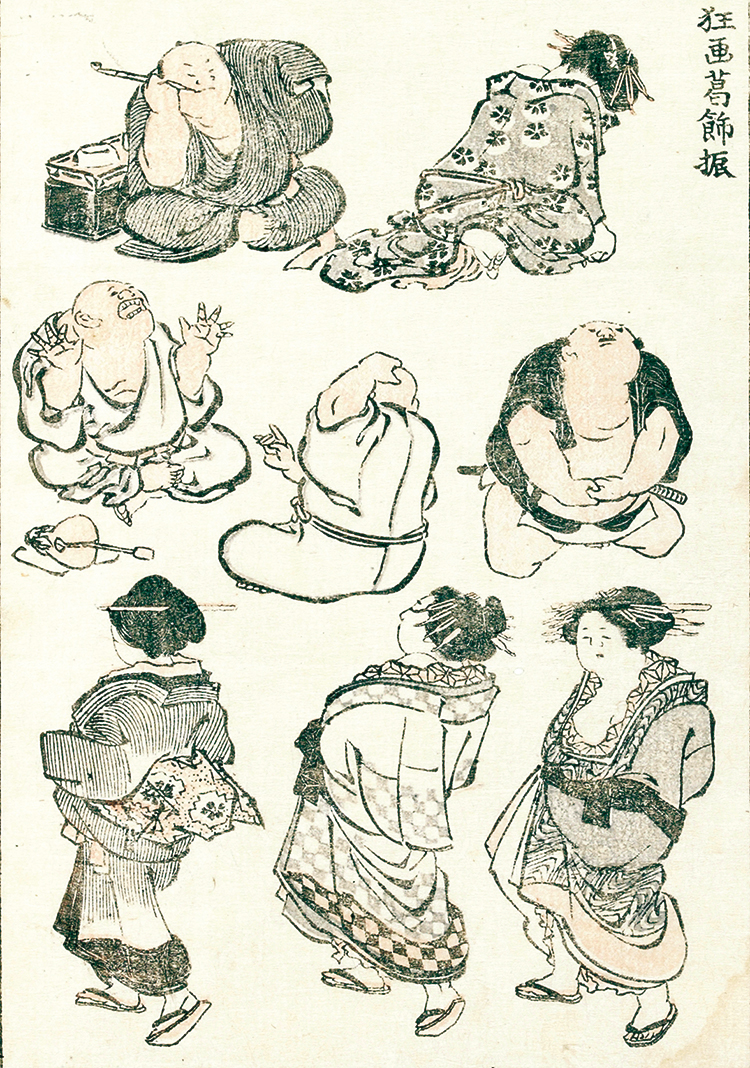
According to the leading collector of the famous Manga, its fame rests on the incredible imagination of the artist. According to URAGAMI Mitsuru, Hokusai’s Manga […]
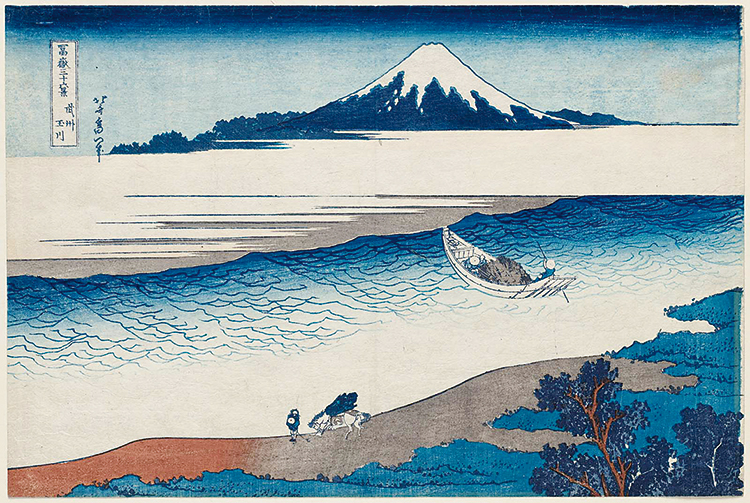
The phenomenon that excited curiosity and fascinated collectors in the West has had a remarkable evolution. The River Tama in Musashi Province (Bushu Tamagawa), from […]
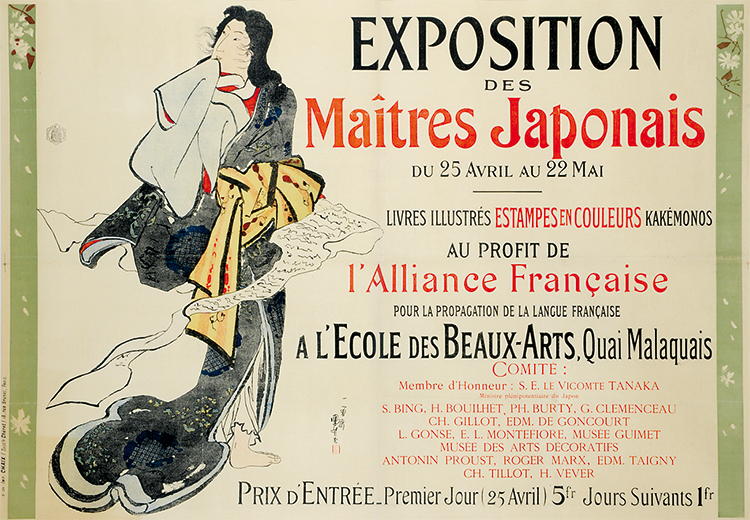
From the second half of the 19th century, the French capital followed the example of Japan. Poster for the 1890 exhibition devoted to Japanese prints. […]
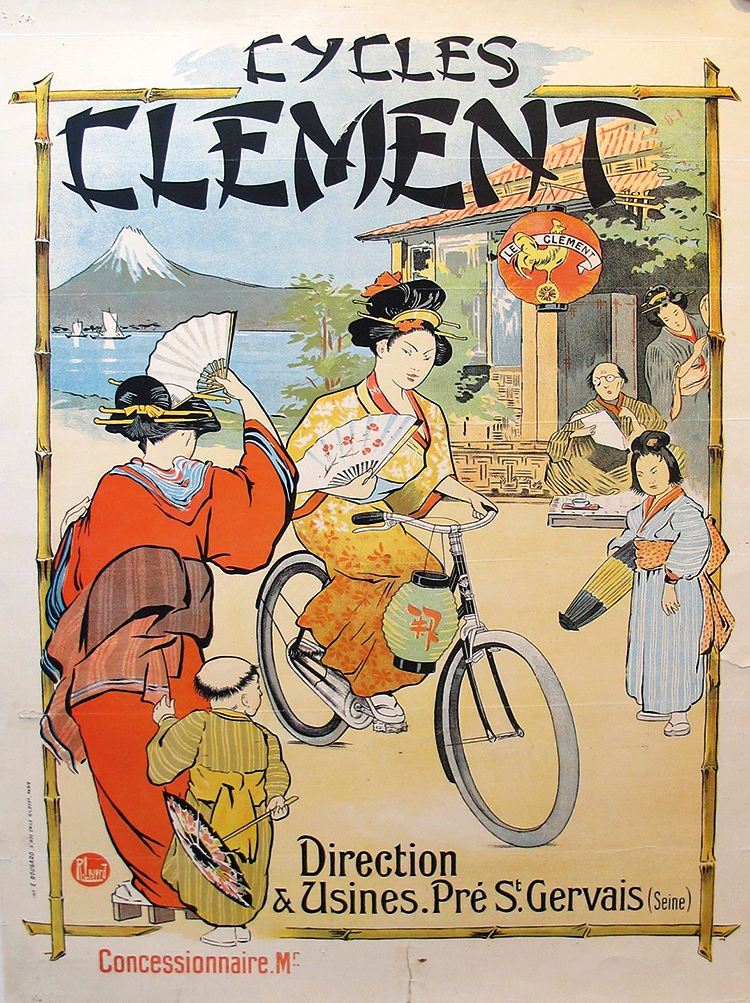
During the past few decades, the extent of Japan’s influence on the Western art world has been revealed. This poster for Clément bicycles, circa 1900, […]
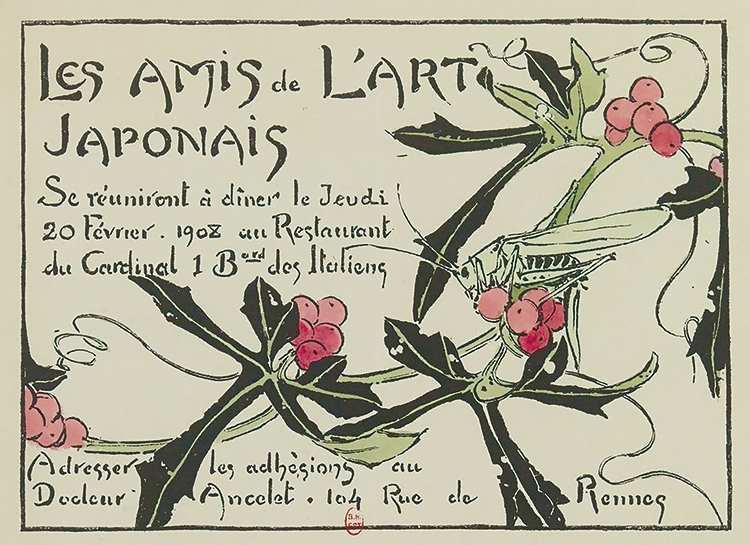
To coincide with the opening of a season devoted to Japanese culture, we invite you to discover the origins of Japonisme in France. It was […]
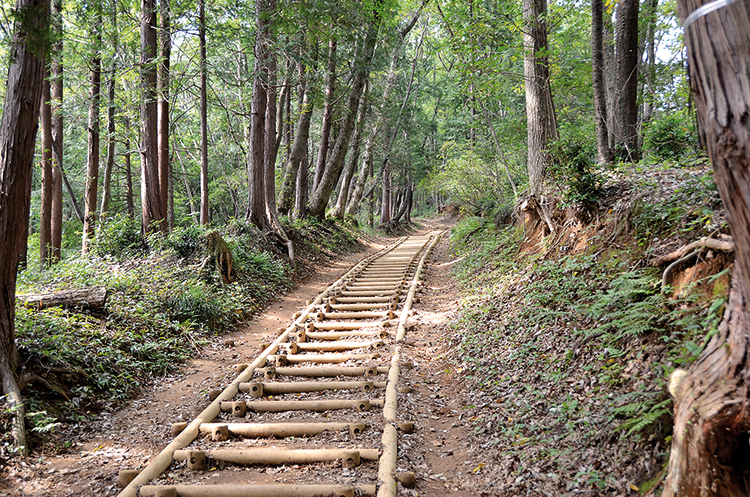
This green lung in the Tokyo region is ideal for those who love walking and unusual discoveries. The Greater Tokyo area has no shortage of […]
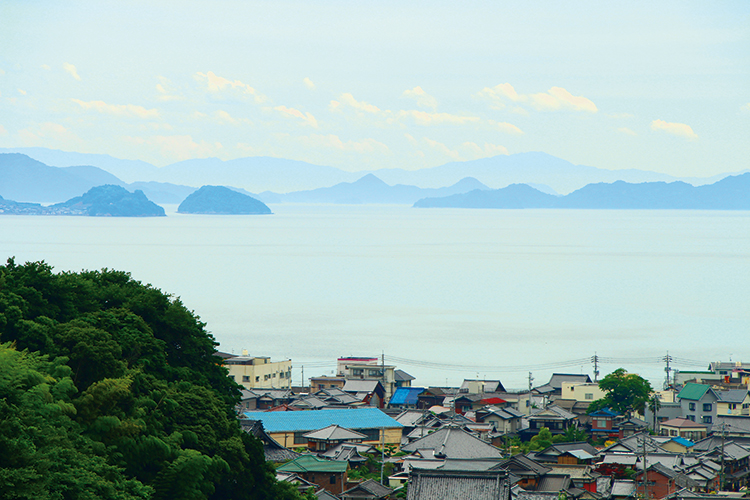
You’ll never grow weary of this island of paradise, which is often used as a film setting. i still experience the same emotion when we […]
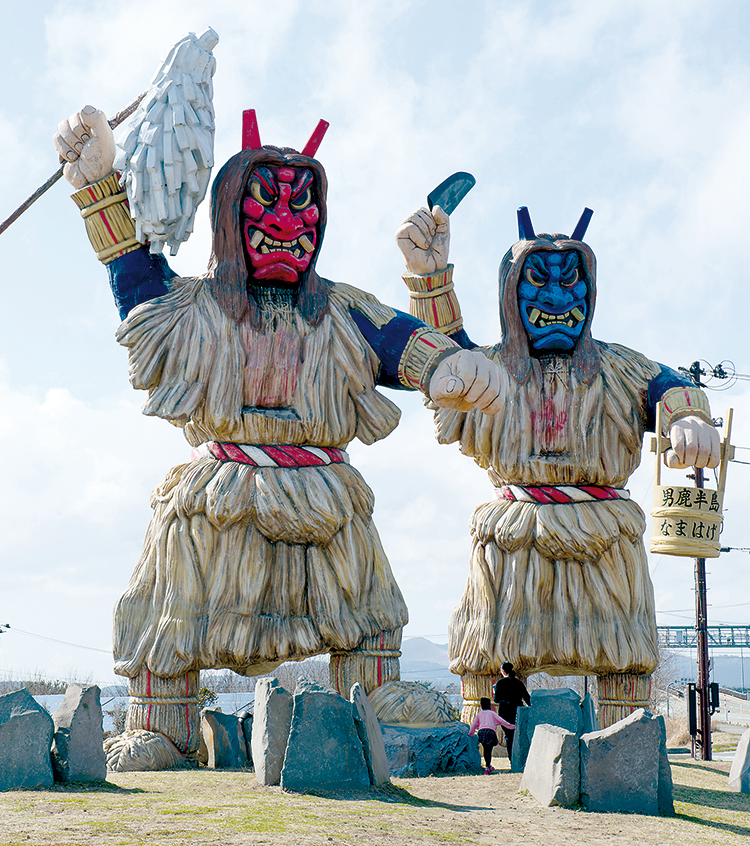
One of the most scenic areas in the country, the Oga Peninsula is really worth a visit Namahage are omnipresent on the Oga Peninsula. […]
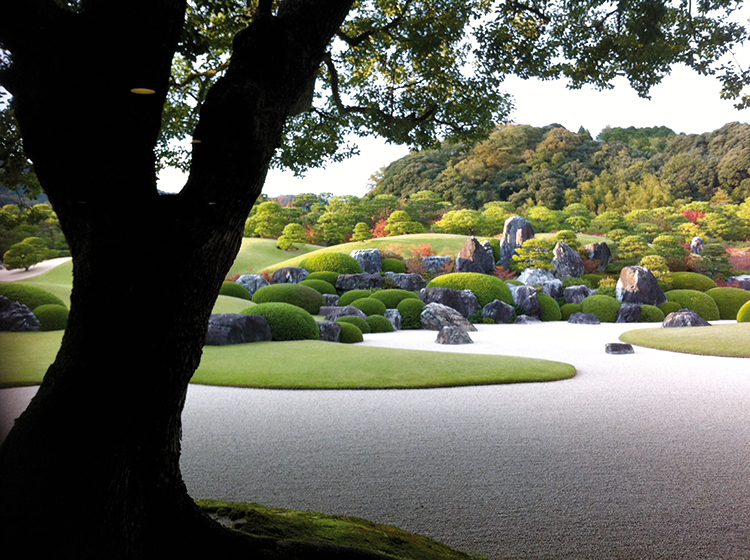
Thanks to the Adachi Museum of Art surrounded by its magnificent garden, this small city is an essential place to visit. From behind vast bay […]
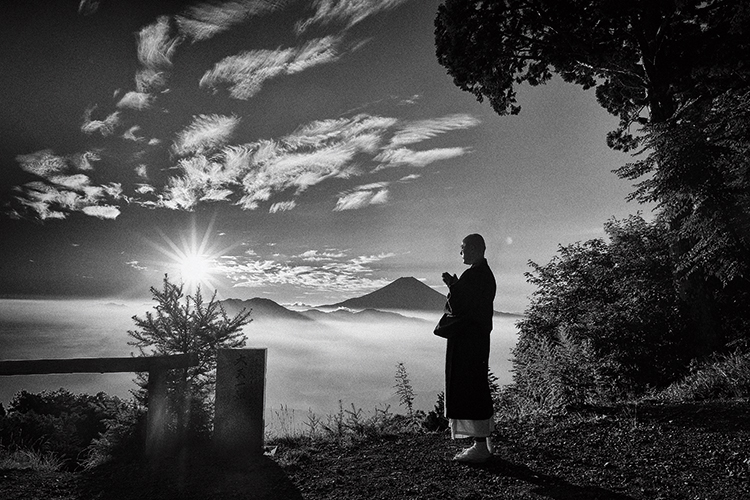
Mount Fuji as you’ve never seen it before Awe-inspiring experiences typically start in mundane ways, and this was no exception. My friend Nicolas was penning […]
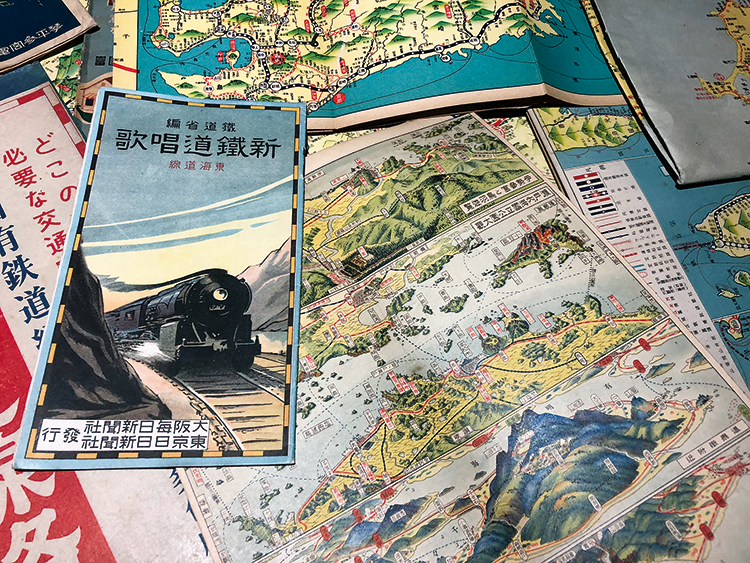
From the north to the south of the archipelago, we invite you to discover original and authentic places to visit. Thanks to a comprehensive railway […]
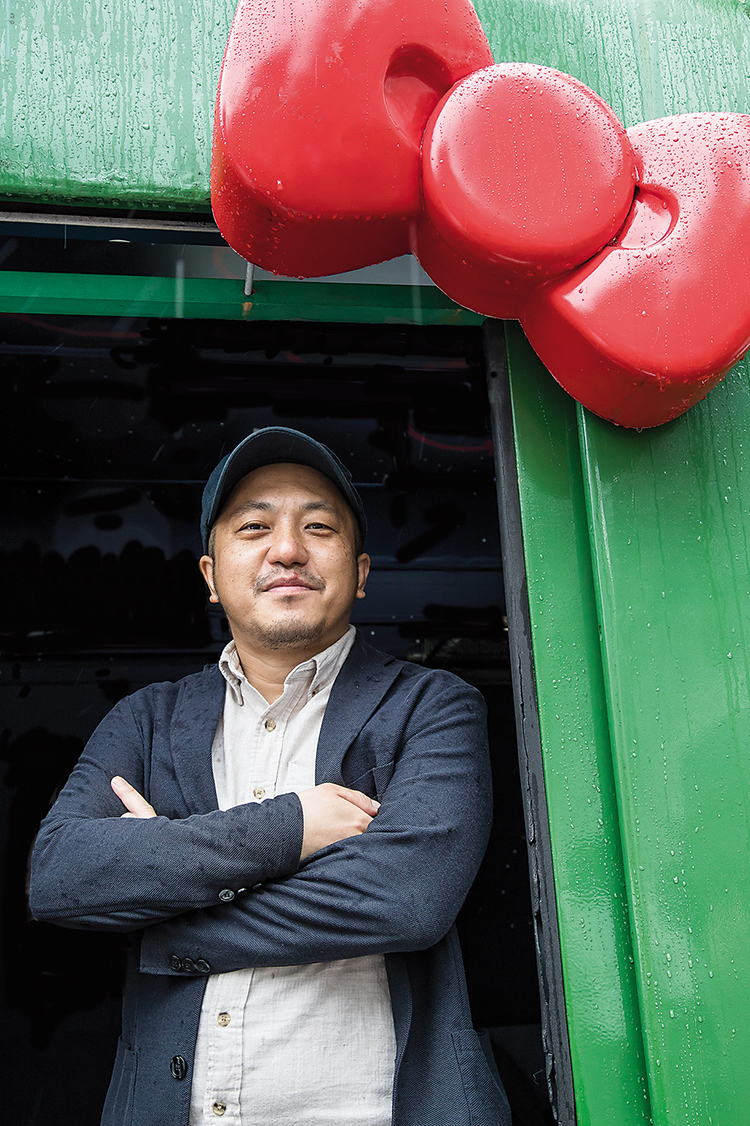
After working under the great Wakamatsu Koji, Shiraishi Kazuya knows exactly how to achieve his goals. SHIRAISHI Kazuya is hopeful that new players like Netflix […]
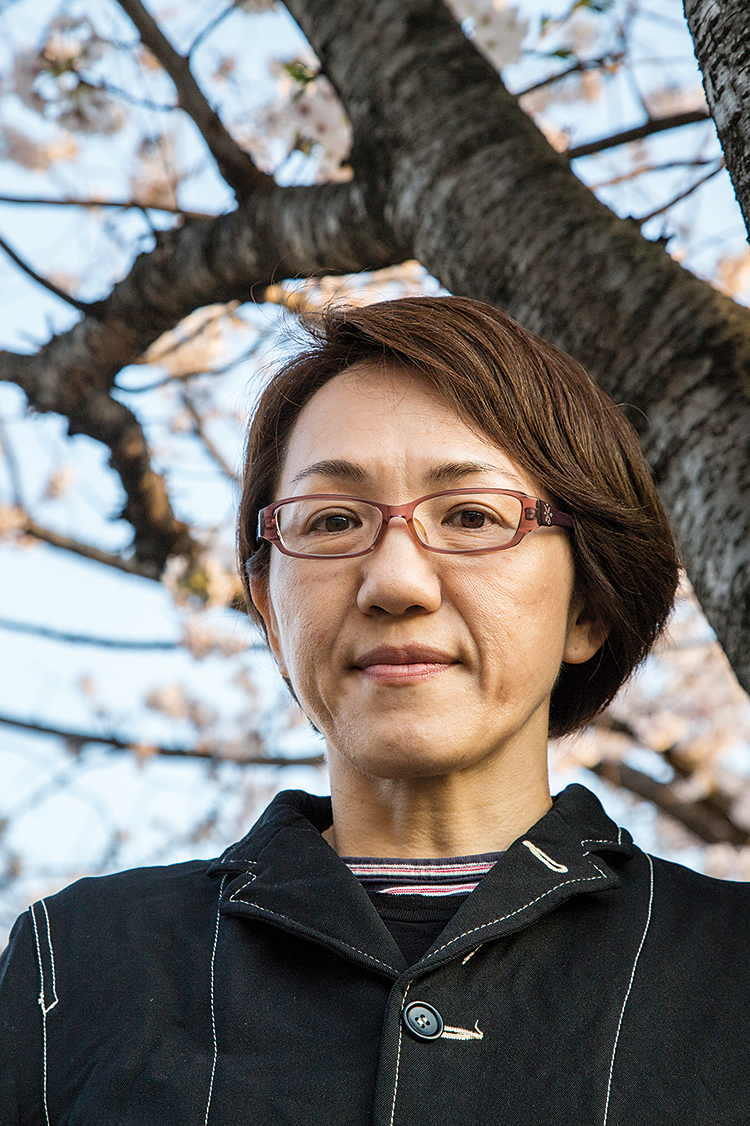
In her films, Ogigami Naoko focuses on demonstrating that Japanese society needs to evolve. OGIGAMI Naoko would like to see Japanese society become more open. […]
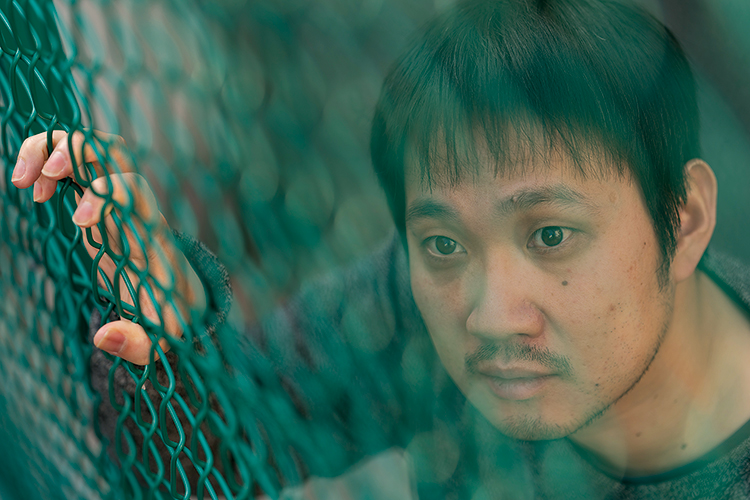
The work of American director Cassavetes has greatly influenced Hamaguchi Ryusuke, the rising star of Japanese cinema. HAMAGUCHI ryusuke has cast convention aside to create […]
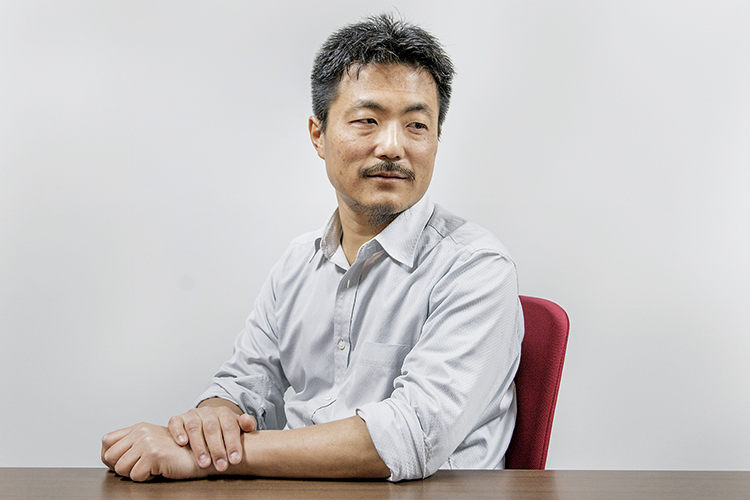
A documentary and fiction film-maker, Funahashi Atsushi has numerous ambitious projects. FuNAHASHi Atsushi considers that cinema can help audiences makes their own minds up about […]
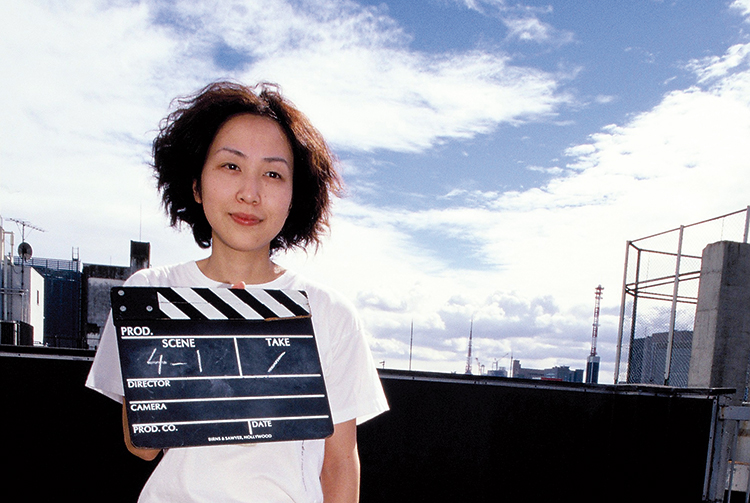
Film director Aoyama Shinji agreed to give us an exclusive interview about his vision for contemporary Japanese cinema. On the roof of Eigabi gakko (Film […]
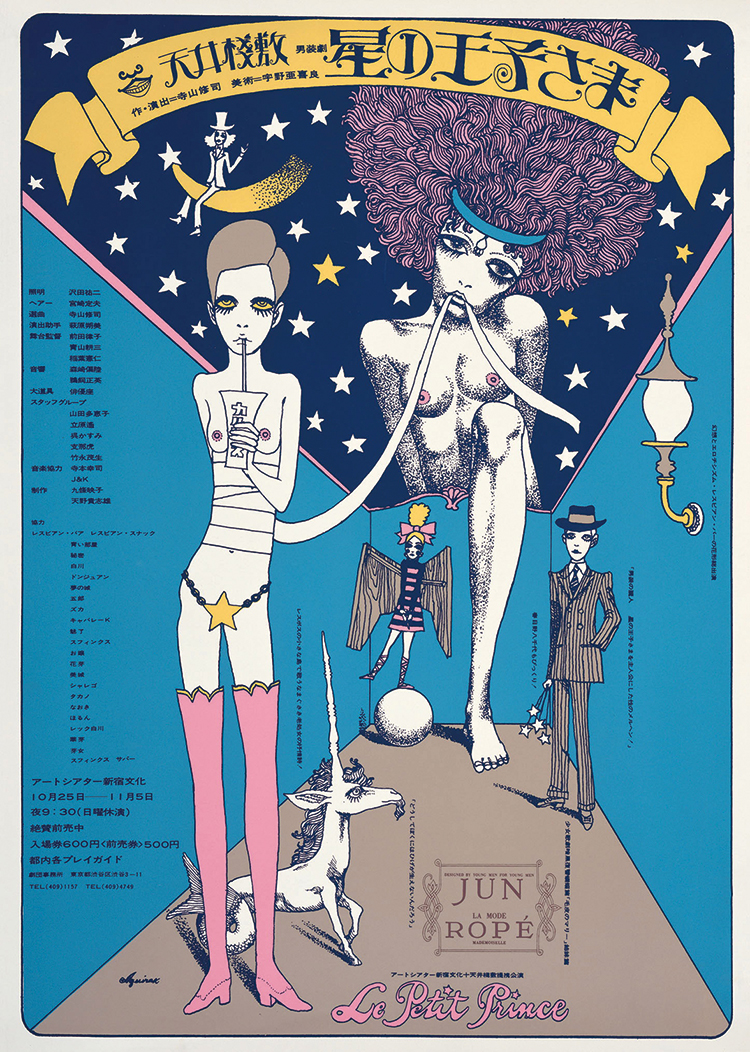
An expert on Japanese theatre, William Andrews offers his analysis of how it changed at the end of the 1960s. Poster of The Little Prince […]
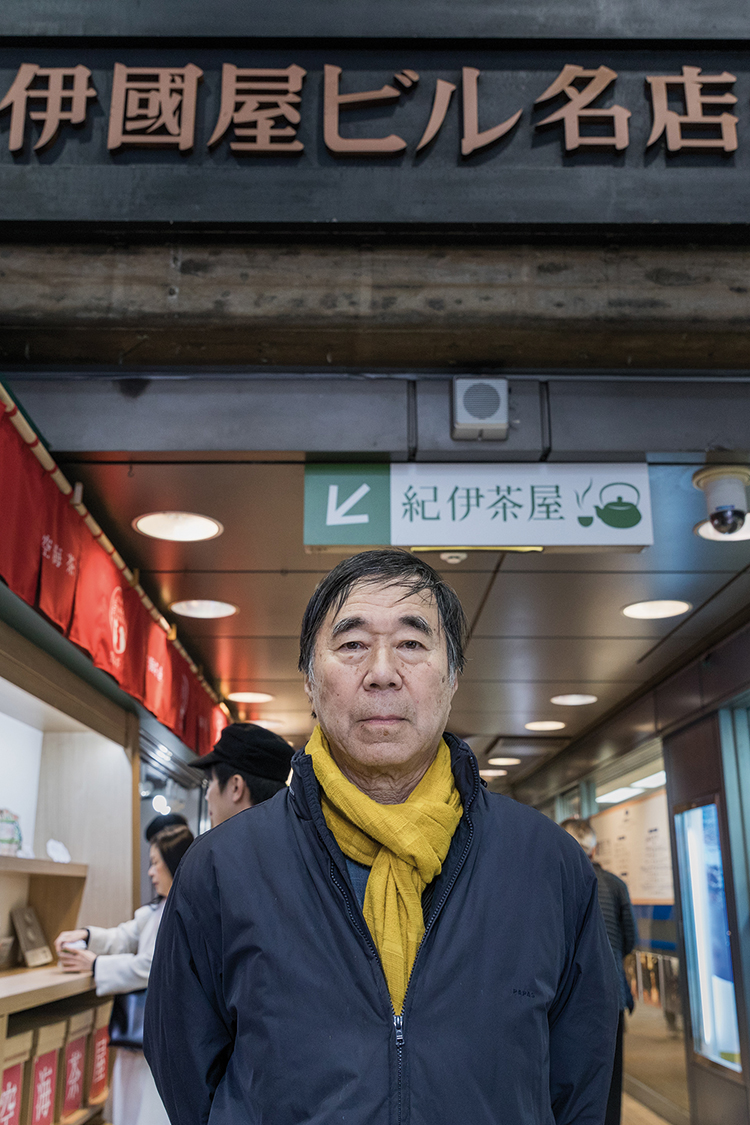
As one of the foremost observers of contemporary culture, Kawamoto Saburo shares his views of turbulent Shinjuku. Kawamoto Saburo at the main entrance of the […]
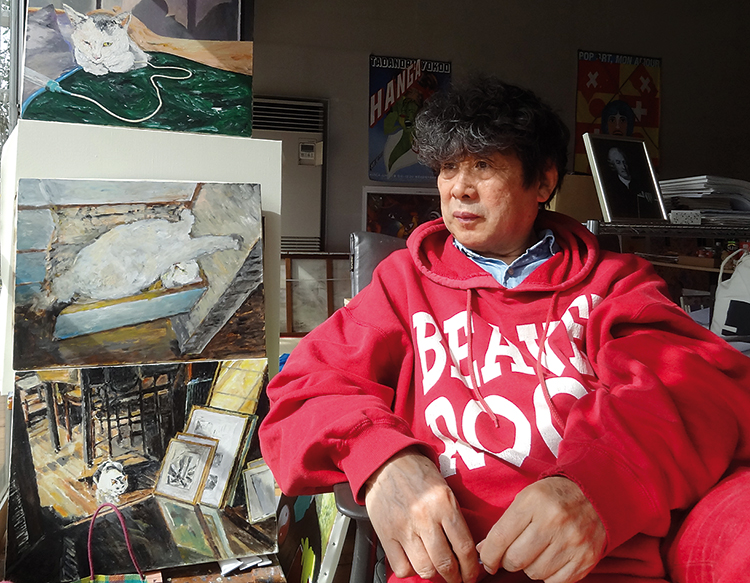
A major player on the art scene of the period, Yokoo Tadanori recalls his years in this emblematic district. Yokoo Tadanori in his studio designed […]
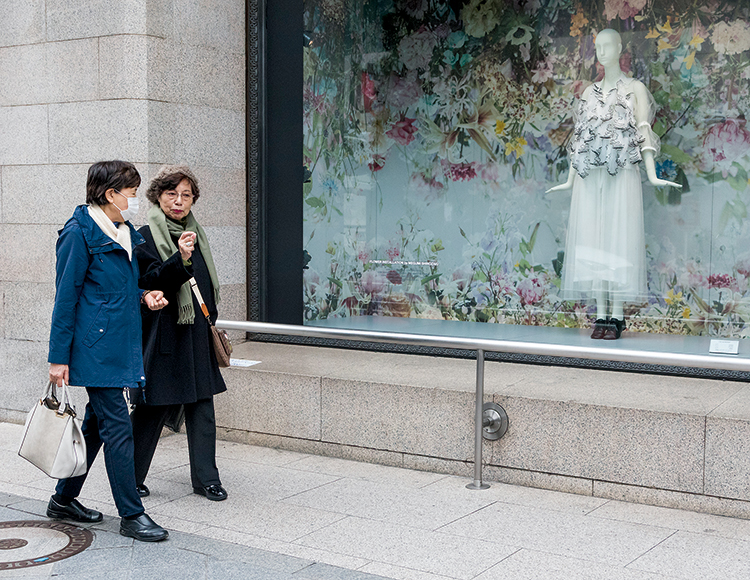
From its time as one of Tokyo’s culture centres, Shinjuku has experienced profound upheaval. Shinjuku in 2018, photo by Jérémie Souteyrat. after spending the […]
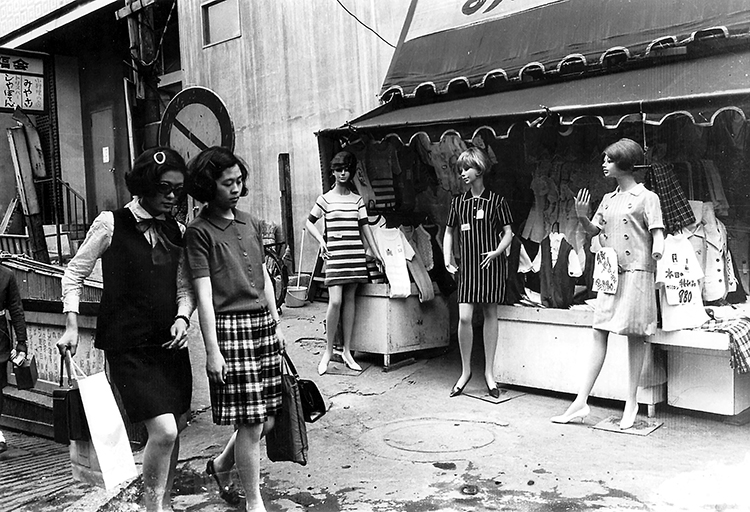
Just 50 years ago, this famous ward in the Japanese capital was one of the main centres of rebellion in the country. Shinjuku in 1968 […]
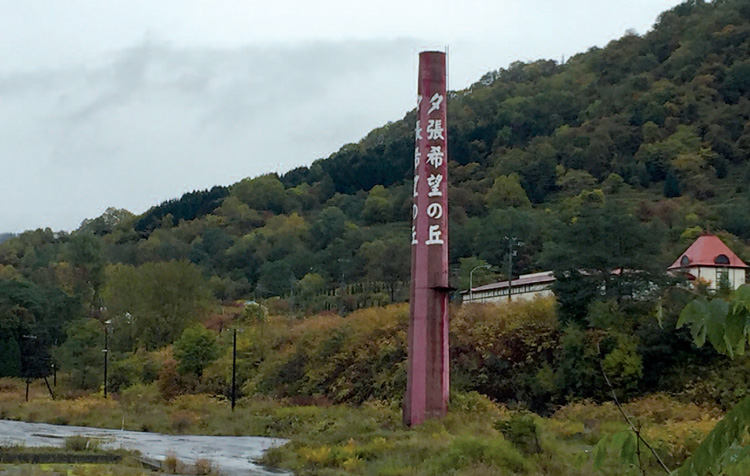
The hill of hope (Yubari kibo no oka) has lost some of its splendour, but the city council hopes that all is not lost. […]
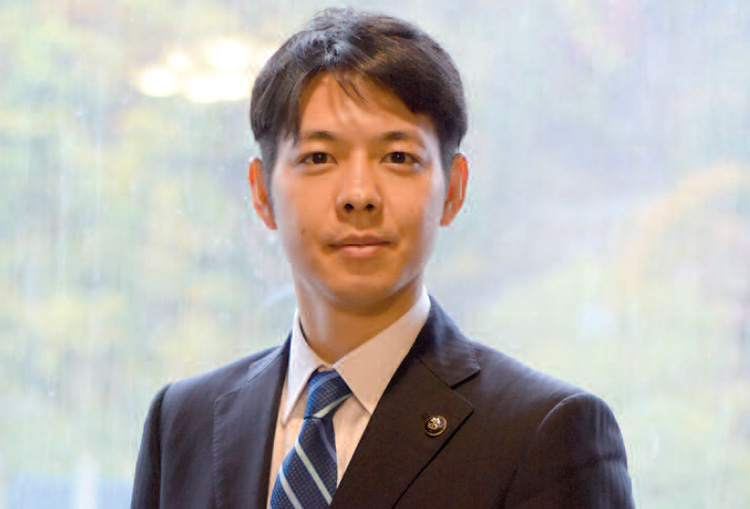
In charge of Yubari since 2011, Suzuki Naomichi is fighting to transform the city. In your official position, what have you done to become […]
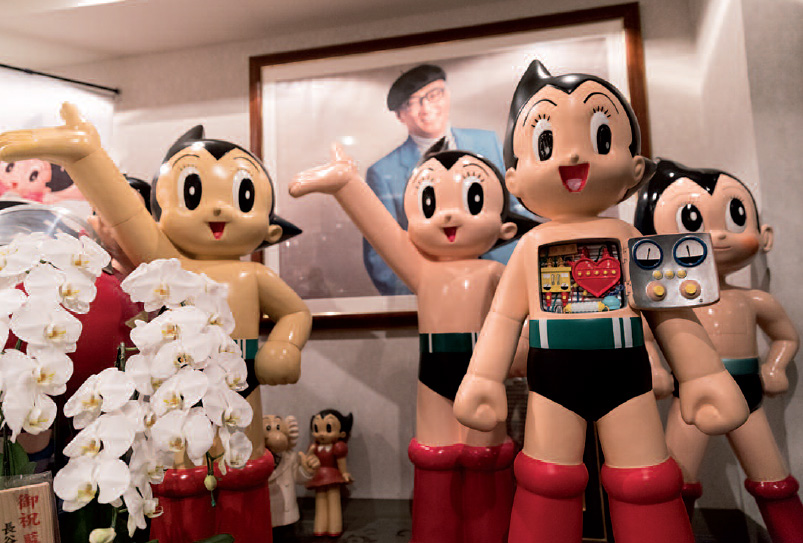
Tezuka Osamu and Mighty Atom at the Tezuka Productions office in Saitama. Frederik L. Schodt was one of the very few Westerners to become […]
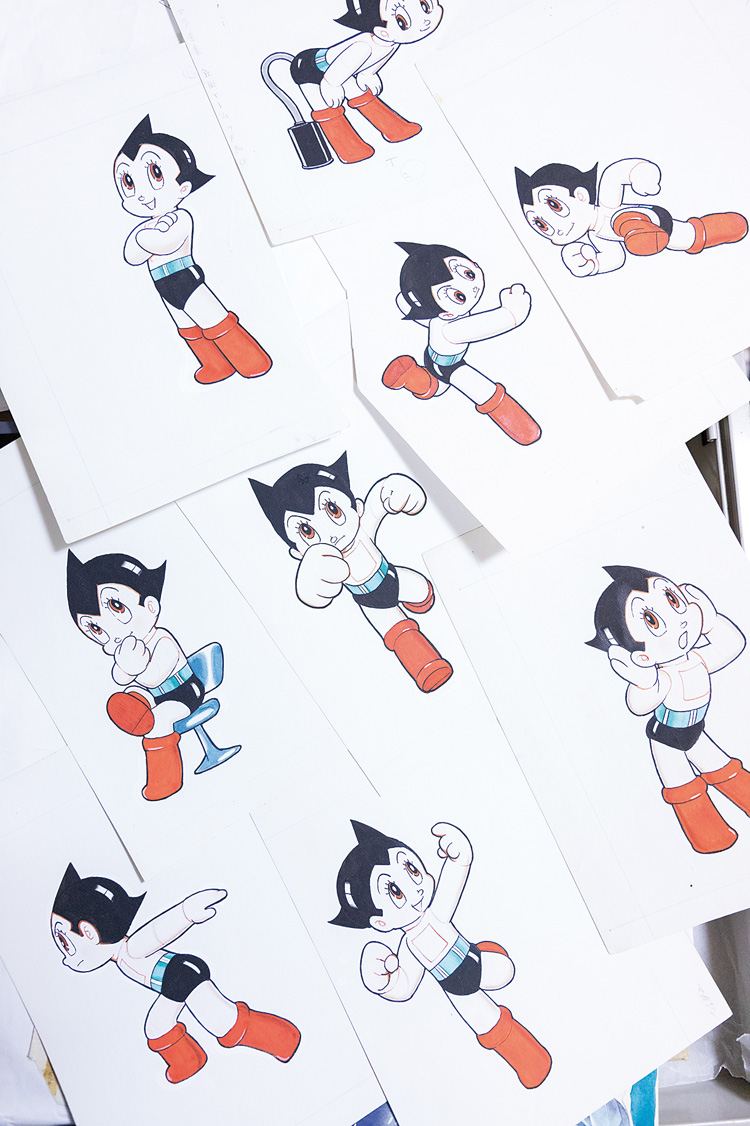
Black Jack is one of the most famous manga by Tezuka Osamu. The company aims to keep the memory of this brilliant artist alive, […]
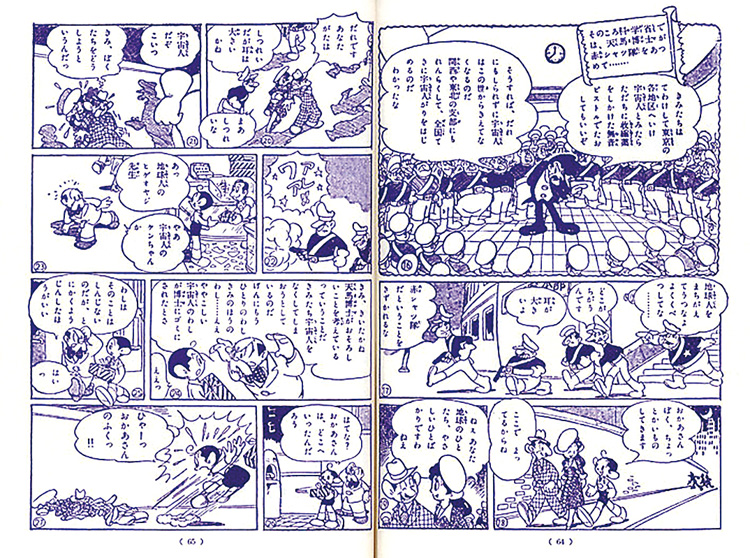
Above : Extract from Red-Shirt Troops. Below : Extract from Rubi’s adventure. We were able to immerse themselves in the make-believe world of the […]
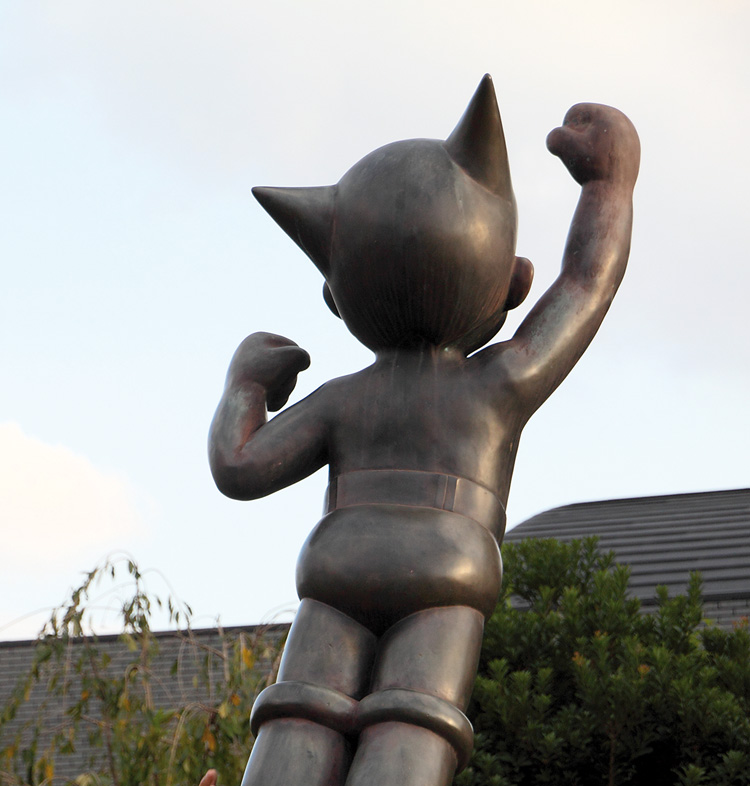
This character made Tezuka a legend in Japan and throughout the world, so naturally it’s been immortalised. Ask any anime fan if they know Hanno […]
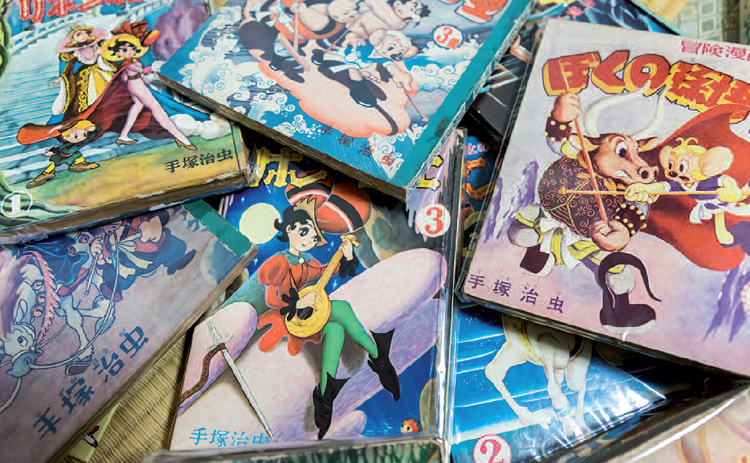
Hayashi Shinji has been collecting all he can connected to the work of the mangaka for more than 30 years. When visiting Hayashi Shinji’s home, […]
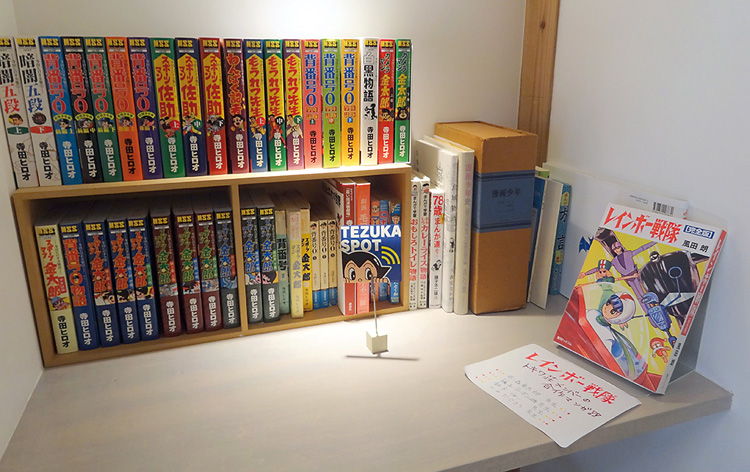
This is the route to follow if you want to retrace the footsteps of Tezuka, and immerse yourself in the history of manga. Ikebukuro – […]

Afro-Japanese relations date back to the16th century, but there’s still much room for improvement. During the past few years, Africa has increasingly appeared on […]

After living in the archipelago for 28 years, Nanayew Sanul Aning recalls how he became a citizen of his host country. In the trendy […]

The Yano Brothers have known both highs and lows since their arrival in the archipelago. with his slanting eyes and dreadlocks, Michael Yano makes […]
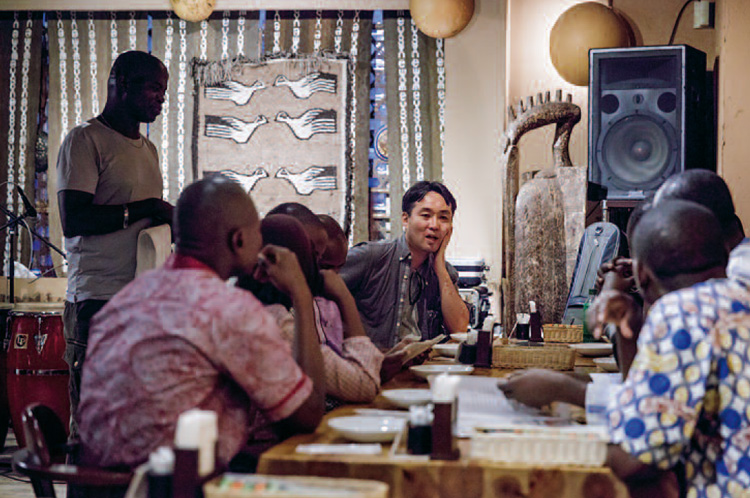
Calabash is one of those rare places that beats to the African rhythm of life, thanks to its founder Kumazawa Fusahiro. every evening, you’ll […]
Copyright © 2025 | WordPress Theme by MH Themes